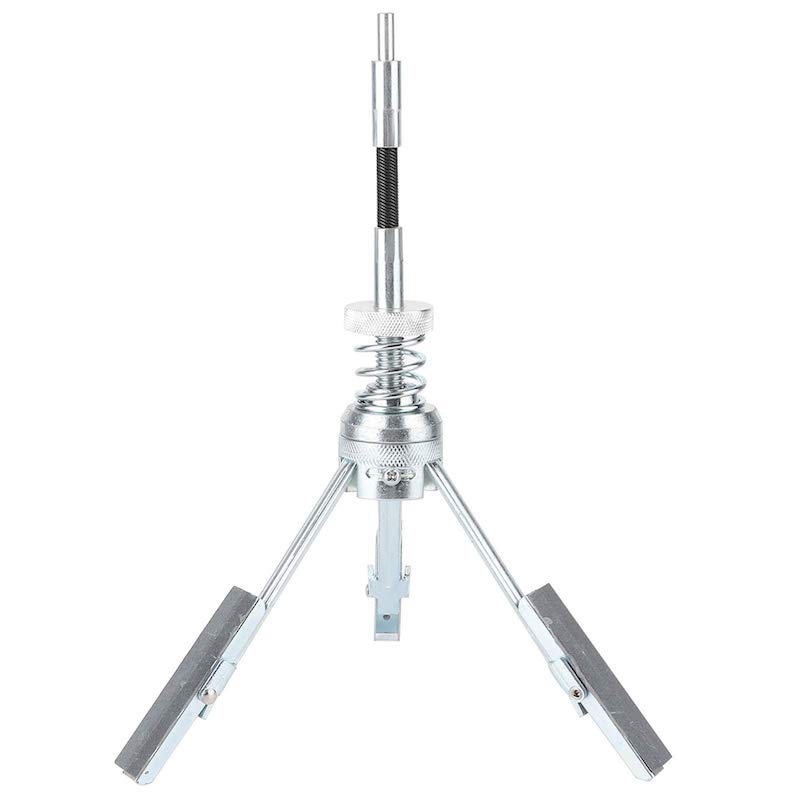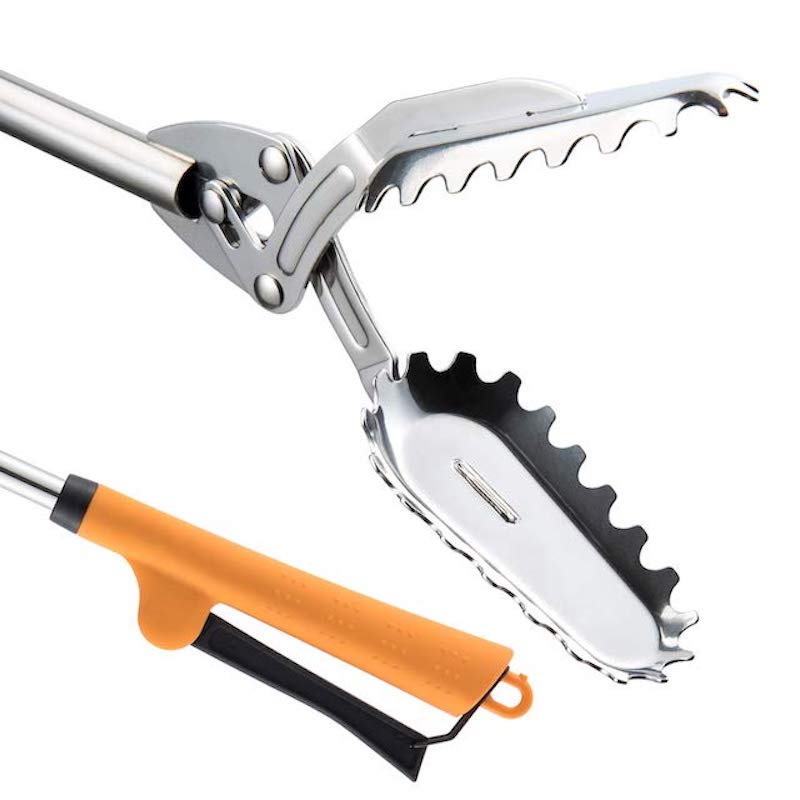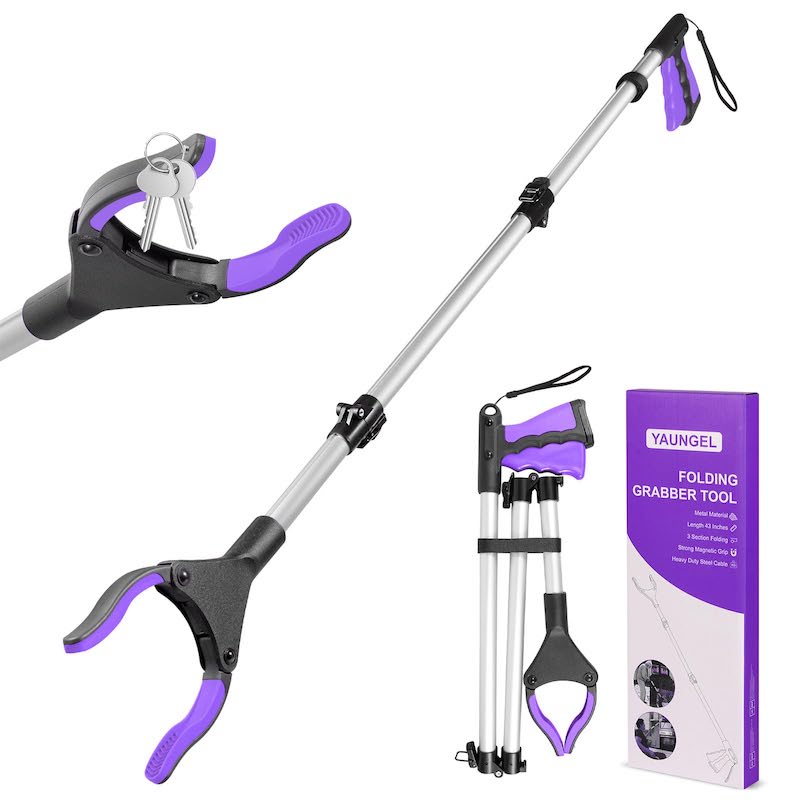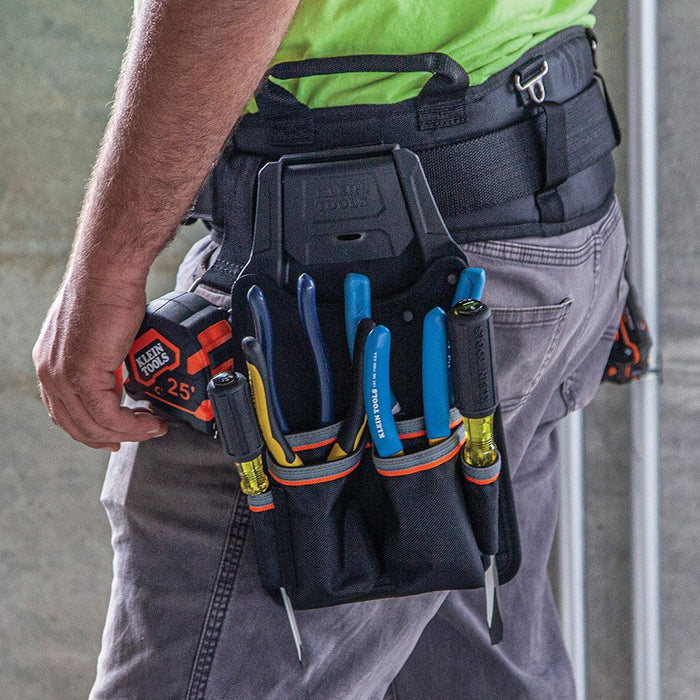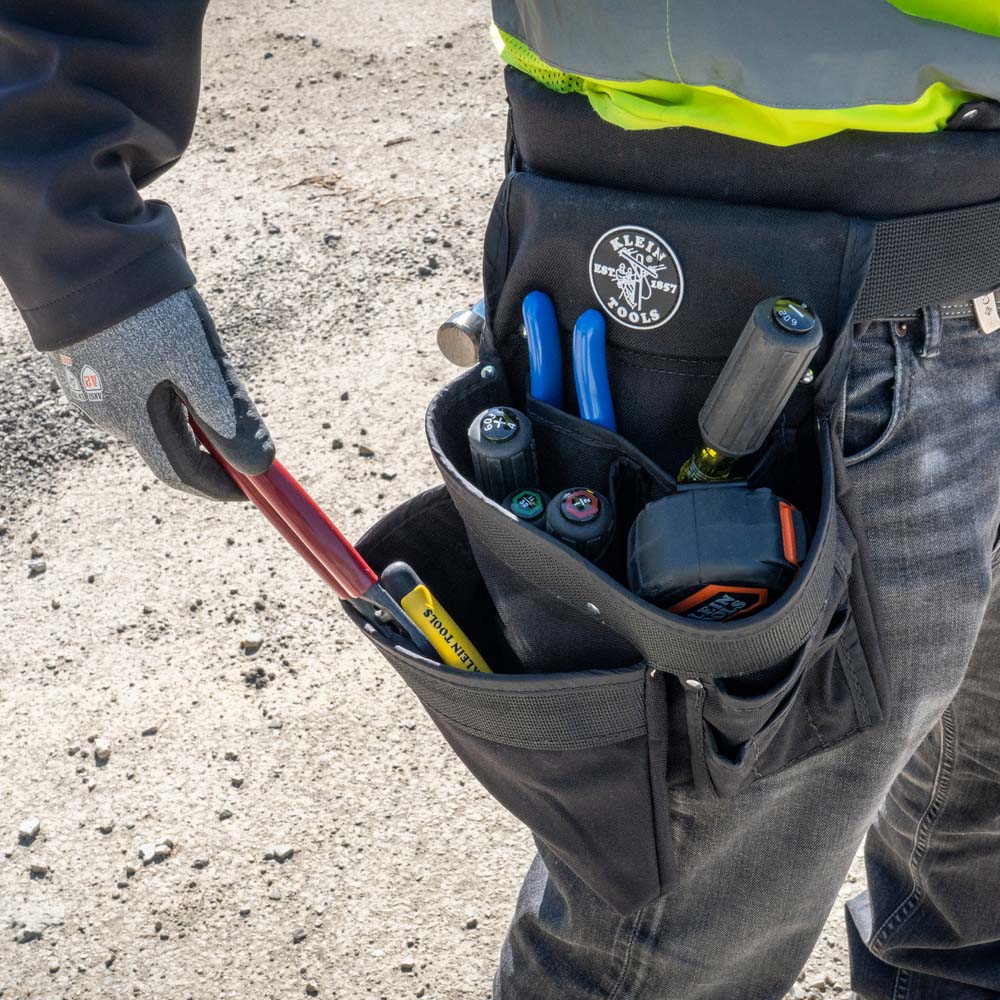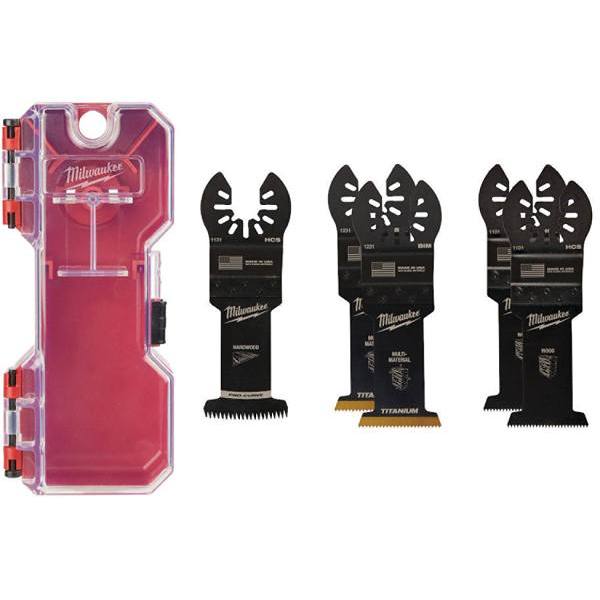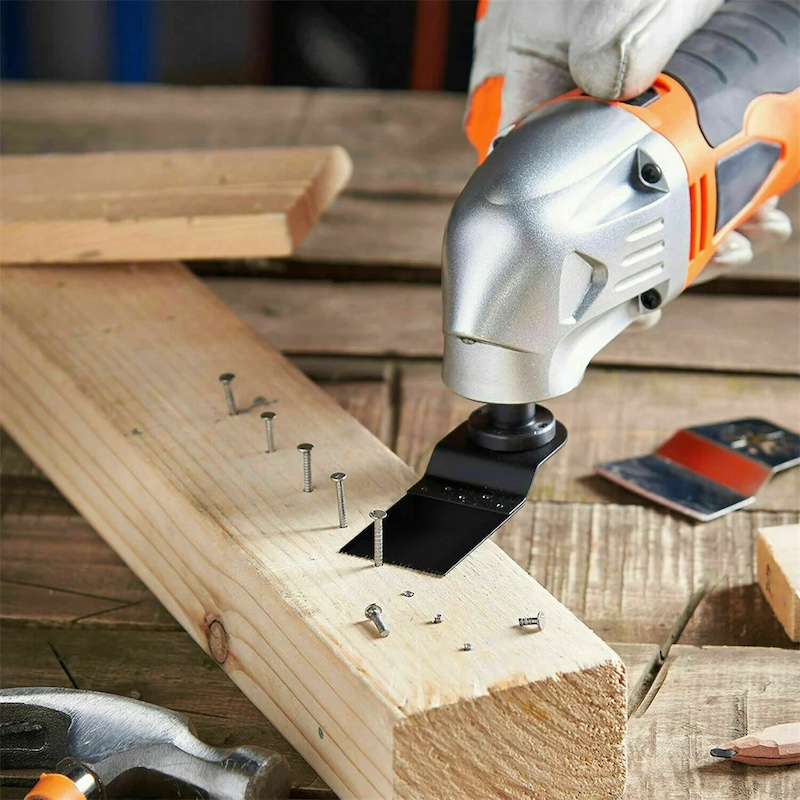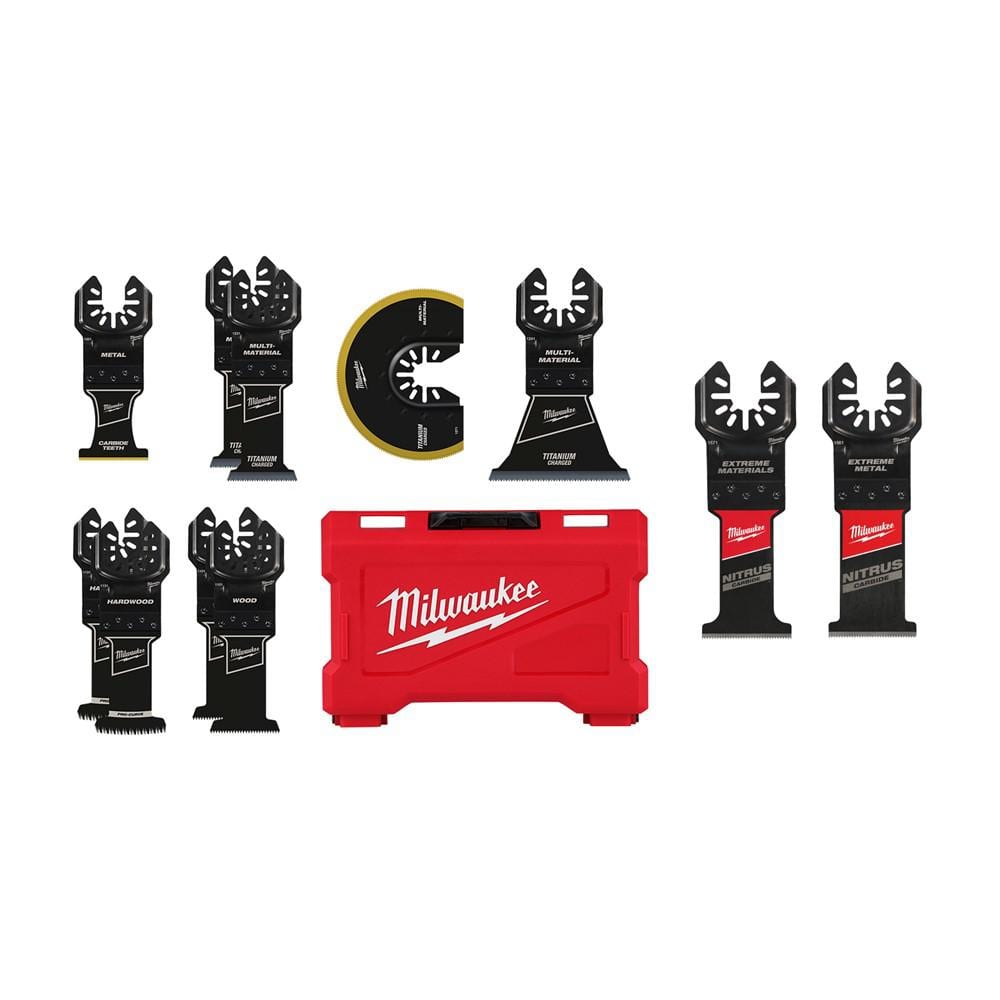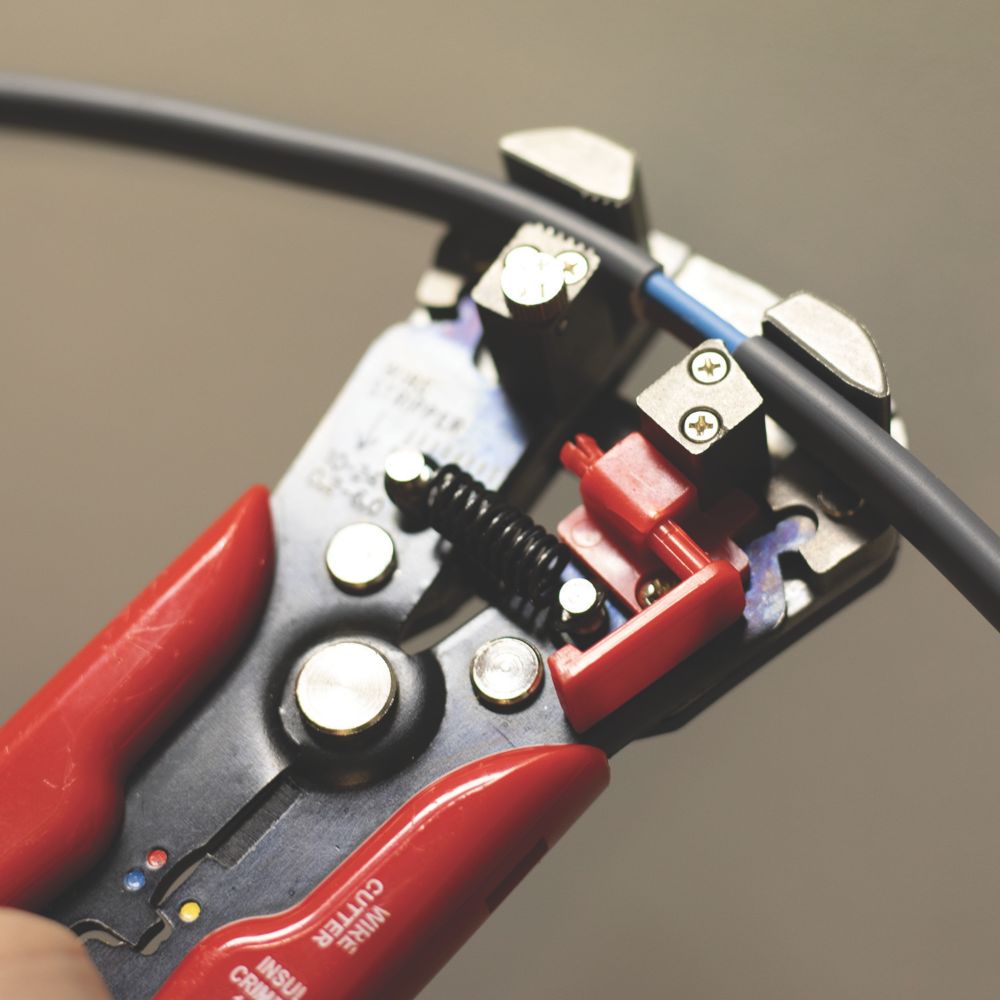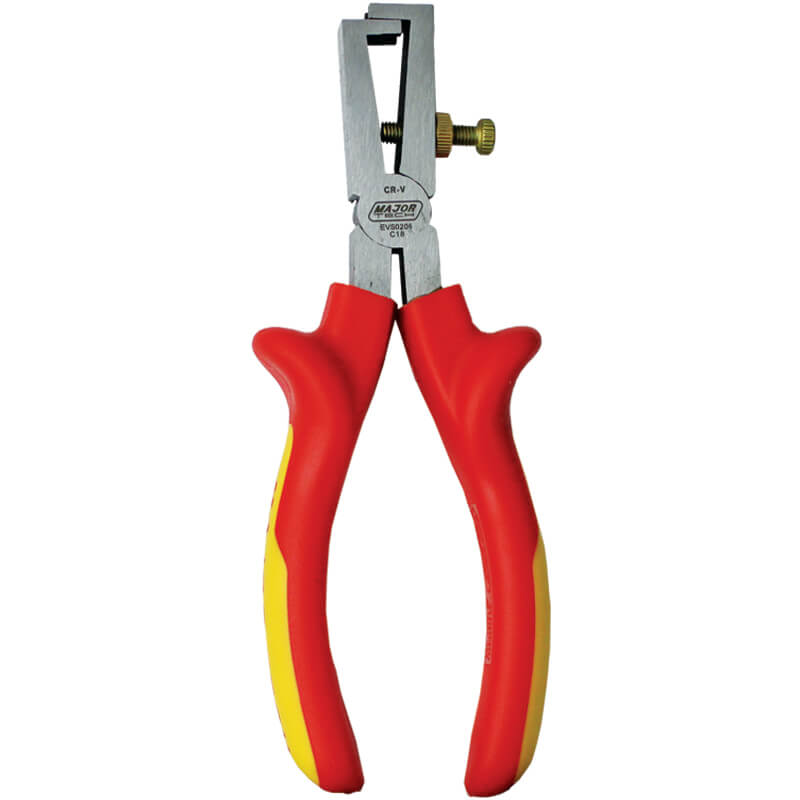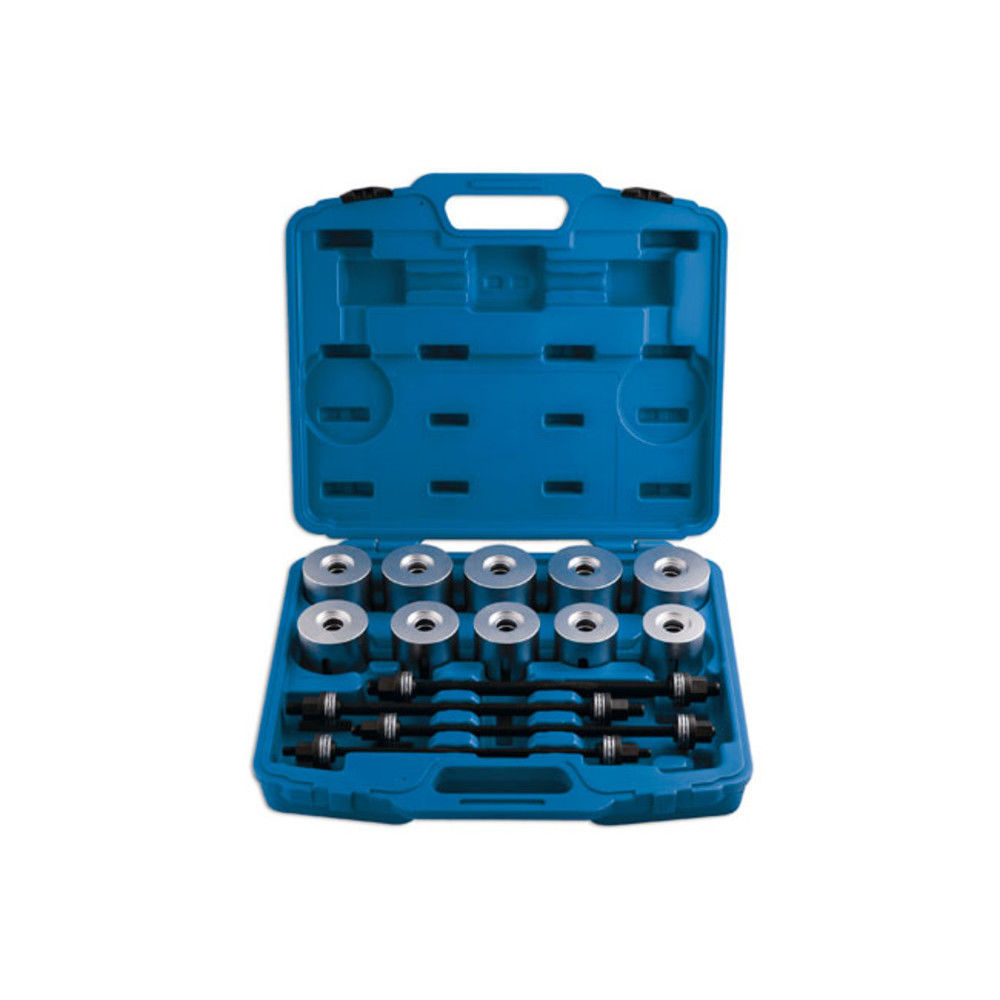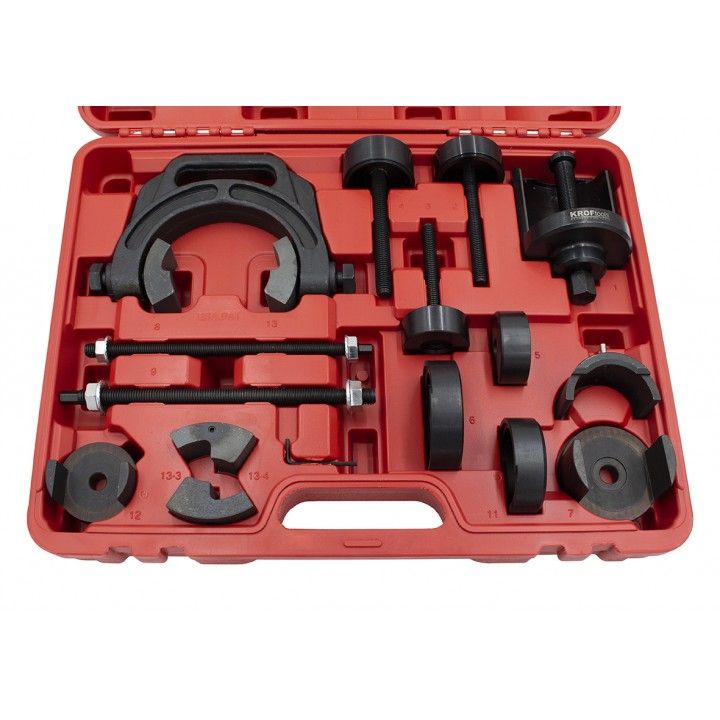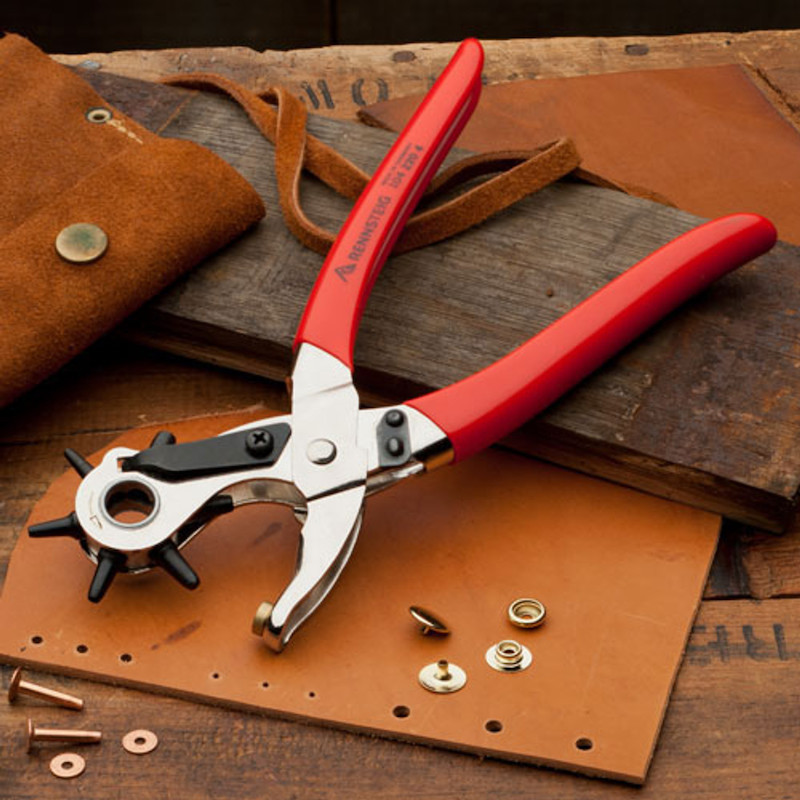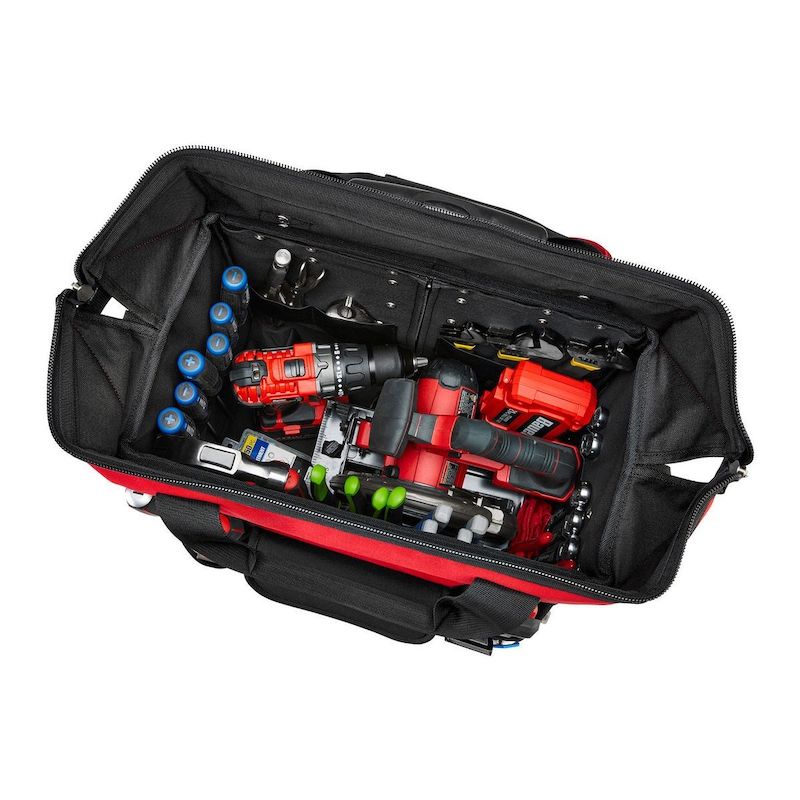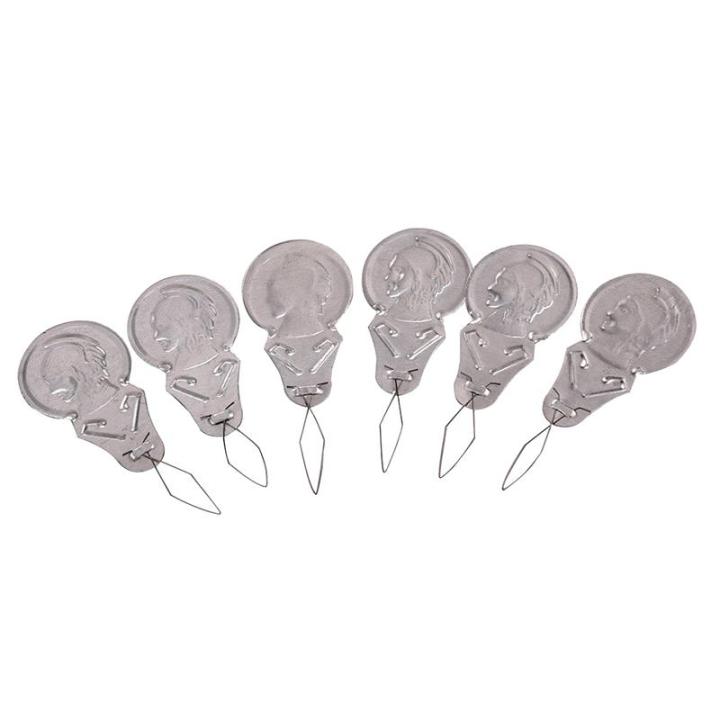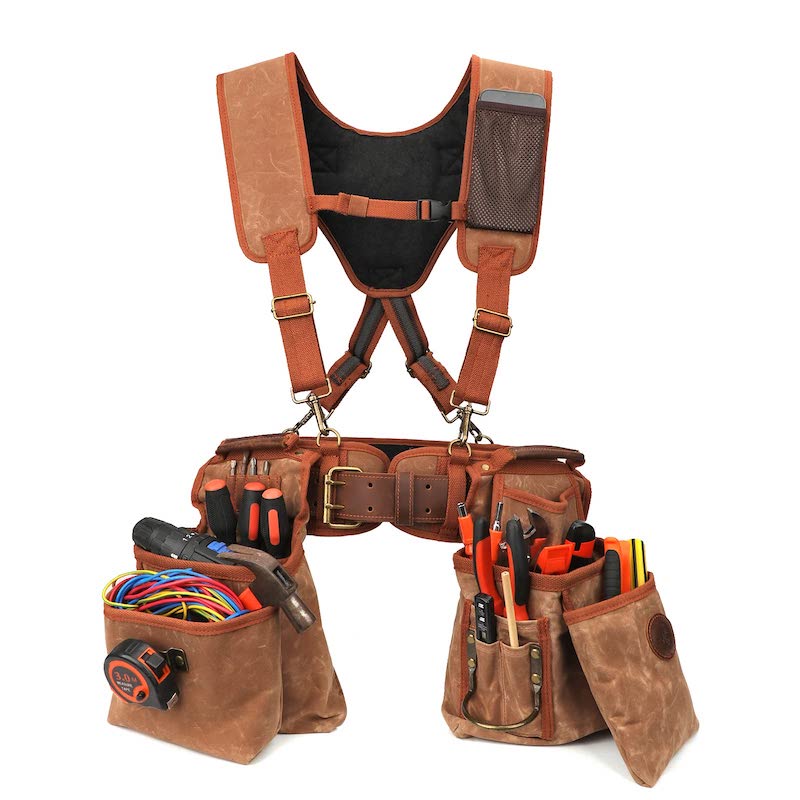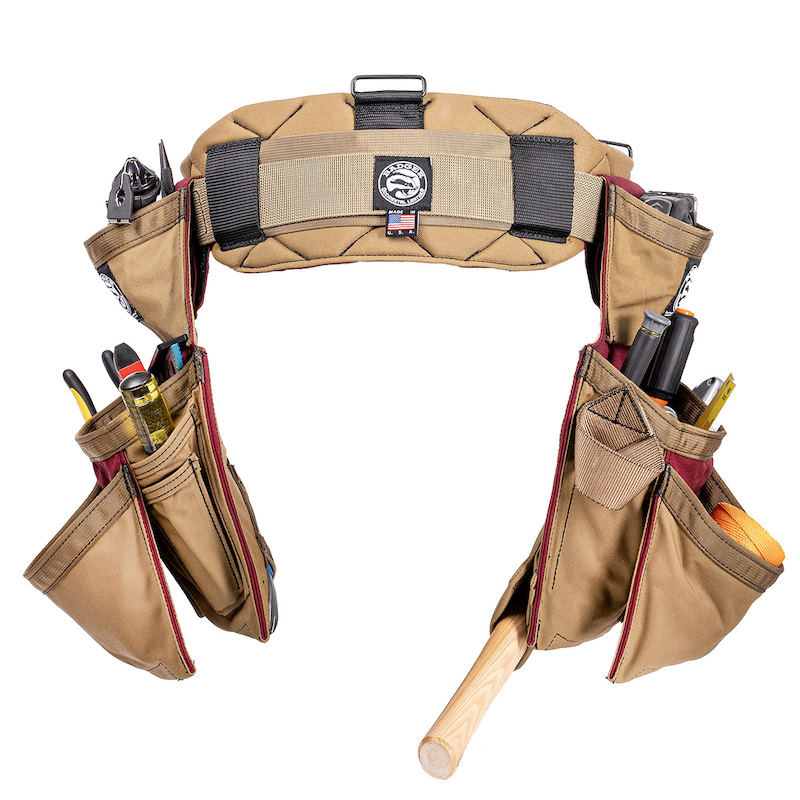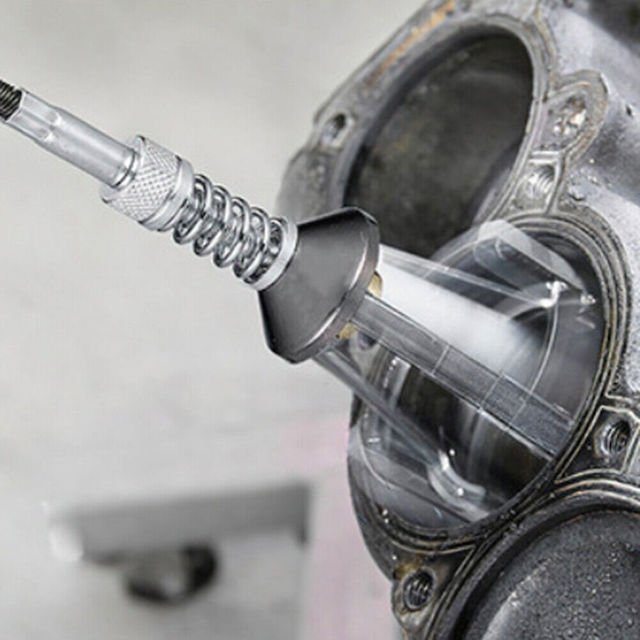
The Ultimate Guide to Honing Tool: Everything You Need to Know
Introduction
When it comes to maintaining sharp edges on knives, scissors, garden tools, and other sharp objects, honing tools are essential for keeping them in top condition. Whether you’re a professional chef, avid gardener, or DIY enthusiast, a quality honing tool is an indispensable addition to your toolkit. We will explore the different types of honing tools available, how to use them effectively. And we will delve into the importance of regular maintenance for sharp, efficient tools.
Another popular type of honing tool is the honing rod, also known as a sharpening steel. This tool is typically made of a hard, smooth steel rod with a handle. It is used to realign and straighten the cutting edge of a blade rather than removing material like a sharpening stone. Honing rods are particularly useful for maintaining the sharpness of knives that are used frequently. They help to remove any burrs or irregularities that may develop on the edge over time.
In addition to sharpening stones and honing rods, there are also specialized honing tools such as diamond files, ceramic sharpeners, and sharpening systems that use abrasive belts or discs. These tools offer more advanced sharpening techniques and are often used in professional settings or by those who require extremely sharp and precise edges for their cutting tools.
Part 1: Understanding Honing Tools
It’s essential to use the right honing tool and technique for each specific blade, as improper sharpening can damage the blade and reduce its effectiveness. Regular honing and maintenance of cutting tools are crucial to ensure their longevity and optimal performance, and a high-quality honing tool is essential for achieving and maintaining a sharp, precise cutting edge.
Level 1: What is a Honing Tool?
A honing tool is a handheld tool designed to sharpen and polish the edge of a blade. There are various types of honing tools, including sharpening stones, honing rods, and sharpening steels, each with its own unique benefits and applications.
Level 2: Types of Honing Tools
- Sharpening Stones: Also known as whetstones, sharpening stones come in a variety of materials, including natural stones like Arkansas, synthetic stones like aluminum oxide, and diamond stones. They are used to grind and hone the edge of a blade to a precise sharpness.
- Honing Rods: Honing rods, also referred to as sharpening rods or sharpening steels, are long, cylindrical rods typically made of steel or ceramic. They are used to realign the edge of a blade and remove any burrs or imperfections.
Part 2: Choosing the Right Honing Tool
There are several different types of honing tools available, including handheld sharpening stones, honing rods, and guided sharpening systems. Each type of honing tool for specific applications can sharpen a wide range of blades and cutting tools. Including kitchen knives, woodworking tools, and sporting knives.
Using a honing tool requires a certain level of skill and technique, as it is important to maintain the proper angle and pressure when sharpening the blade. With practice and patience, however, honing tools can significantly improve the performance and longevity of blades, making them an essential tool for anyone who regularly works with cutting tools. Honing tool is a valuable addition to any tool kit, as they offer a convenient and effective way to keep blades sharp and ready for use.
Level 1: Factors to Consider
When selecting a honing tool, there are several factors to consider, including the type of blade you will be sharpening, the level of sharpening required, and your own personal preferences and experience with honing tools.
Level 2: Honing Tool Maintenance
Proper maintenance of your honing tools is essential to ensure their effectiveness and longevity. Regularly cleaning and storing your honing tools correctly will help to maintain their sharpening capabilities and prevent rust or damage.
Part 3: How to Use Honing Tools
Level 1: Using a Sharpening Stone
Using a sharpening stone requires a certain level of skill and technique, as it involves precise movements to achieve the desired edge. It’s important to hold the blade at the correct angle and apply consistent pressure while passing the blade along the surface of the stone.
Level 2: Using a Honing Rod
Honing rods are generally more user-friendly and forgiving than sharpening stones, making them a popular choice for beginners. To use a honing rod, simply hold the rod firmly in one hand and the blade in the other, then swipe the blade along the length of the rod at a consistent angle and pressure.
Part 4: The Importance of Honing Tools
Level 1: Maintaining Blade Sharpness
Regular use of honing tools helps to maintain the sharpness of blades. Reducing the need for frequent, intensive sharpening and extending the lifespan of the blade.
Level 2: Safety and Efficiency
A sharp blade is not only safer to use but also more efficient. Allowing for cleaner cuts and smoother, more precise motions.
Part 5: Honing Tools for Different Applications
Level 1: Kitchen Knives
Honing tools are essential for maintaining the sharpness of kitchen knives, ensuring they remain effective for slicing, dicing, and chopping a variety of ingredients.
Level 2: Gardening Tools
Maintaining the sharpness of pruning shears, hedge trimmers, and other garden tools with honing tools is crucial for clean, precise cuts and healthy plant maintenance.
Benefits of Using a 9-Honing Tool
- Improved Precision: Using a 9-honing tool allows for greater precision when sharpening blades and tools. Resulting in better performance and longer tool life.
- Time Savings: The 9-honing tool can sharpen and complete tasks more quickly and efficiently. And saving time and enabling users to focus on other important tasks.
Types of 9-Honing Tools
- Sharpening Stones: 9-honing tools may include various types of sharpening stones, such as oil stones, water stones, and diamond stones. Each offering different levels of abrasiveness for achieving the desired sharpness.
- Guided Sharpening Systems: Some 9-honing tools come with guided sharpening systems that provide a consistent angle for sharpening. Making it easier for users to achieve optimal results without the need for manual precision.
Maintenance and Care for 9-Honing Tools
- Cleaning and Storage: Regular cleaning of the sharpening surfaces and proper storage of the 9-honing tool can help maintain its effectiveness and prolong its lifespan.
- Lubrication: Some 9-honing tools may require lubrication with oil or water to ensure smooth sharpening and prevent excessive wear on the sharpening surfaces. Following manufacturer recommendations for lubrication can help prolong the tool’s effectiveness.
Conclusion
Honing tool is an essential addition to any tool collection. Offering a simple yet effective way to maintain the sharpness and efficiency of a variety of blades. Understanding the different types of honing tools available, how to choose the right one, and utilizing proper maintenance and usage techniques. You can ensure your tools remain sharp and reliable for years to come. Whether for culinary, gardening, or general DIY purposes, honing tools are a valuable investment in the longevity and effectiveness of your blades.
A honing tool is an essential instrument. It can sharpen and refine the edge of a variety of cutting tools. Including knives, chisels, razors, and scissors. The process of honing involves the removal of small amounts of material from the blade’s edge. Resulting in a sharper and more precise cutting edge.
There are several types of honing tools available, each designed for specific purposes and materials. One of the most common and versatile honing tools is the sharpening stone. They use the natural or synthetic materials such as whetstone, ceramic, or diamond. Sharpening stones come in a variety of grits, ranging from coarse to fine. Allowing for different levels of sharpening depending on the blade’s condition and the desired level of sharpness.
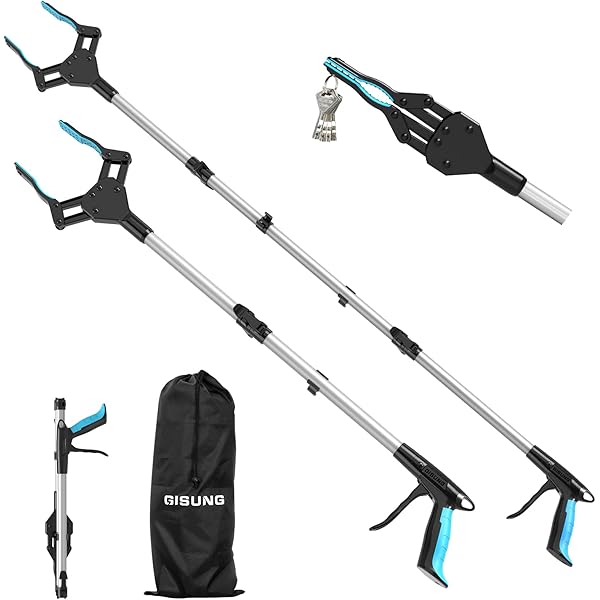
The Ultimate Guide to Heavy Duty Grabber Tools
Introduction
Heavy duty grabber tools are an essential tool for any individual or professional in need of reaching and grabbing objects that are out of arm’s reach. These versatile and handy devices come in various shapes and sizes to suit different needs and applications. In this comprehensive guide, we will take an in-depth look at heavy duty grabber tools, their features, uses, and benefits.
Part 1: Understanding Heavy Duty Grabber Tools
Level 1: What Are Heavy Duty Grabber Tools?
Heavy duty grabber tools are long-reaching devices equipped with a pincer-like end that allows users to grip, lift, and retrieve items that are difficult to reach. These tools are commonly used by individuals with limited mobility, as well as in various industries such as construction, manufacturing, and maintenance.
Level 2: Types of Heavy Duty Grabber Tools
There are several types of heavy duty grabber tools available on the market, each designed to serve specific purposes. Some common types include trigger-style grabbers, magnetic grabbers, articulating grabbers, and gripping claws. Each type offers unique features and capabilities to cater to different needs and preferences.
Part 2: Features and Functions of Heavy Duty Grabber Tools
Level 1: Key Features of Heavy Duty Grabber Tools
Heavy duty grabber tools typically feature a durable construction, ergonomic handle, and a secure grip mechanism. Many models also come with adjustable arms, swivel heads, and locking mechanisms for added versatility and convenience.
Level 2: Functions of Heavy Duty Grabber Tools
Heavy duty grabber tools are designed to perform a wide range of functions, including picking up small items, retrieving objects from high or tight spaces, and accessing hard-to-reach areas. These tools are also commonly used for litter collection, debris removal, and sorting recyclables.
Part 3: Practical Uses of Heavy Duty Grabber Tools
Level 1: Applications in Daily Life
In everyday life, heavy duty grabber tools can be used for various tasks such as picking up dropped items, reaching items on high shelves, and grabbing objects from under furniture or appliances. These tools are particularly beneficial for individuals with mobility challenges or limited dexterity.
Level 2: Industrial and Commercial Applications
In industrial and commercial settings, heavy duty grabber tools are essential for tasks such as assembly line operations, material handling, and equipment maintenance. These tools enable workers to access confined spaces, retrieve parts and components, and perform tasks safely and efficiently.
Part 4: Benefits of Using Heavy Duty Grabber Tools
Level 1: Convenience and Efficiency
One of the primary benefits of heavy duty grabber tools is their ability to provide users with convenient and efficient access to out-of-reach items. These tools eliminate the need for climbing, stretching, or bending, reducing the risk of strain or injury.
Level 2: Accessibility and Inclusivity
Heavy duty grabber tools make tasks more accessible for individuals with mobility limitations, allowing them to maintain independence and accomplish daily tasks with greater ease. These tools promote inclusivity and help create a more accommodating environment for people of all abilities.
Part 5: Considerations When Choosing Heavy Duty Grabber Tools
Level 1: Factors to Consider
When selecting a heavy duty grabber tool, it’s essential to consider factors such as reach length, weight capacity, grip strength, and overall durability. Additionally, users should evaluate the tool’s design, handle comfort, and any additional features that may enhance its functionality.
Level 2: Maintenance and Care
Proper maintenance and care are crucial for ensuring the longevity and performance of heavy duty grabber tools. Users should regularly inspect the tool for wear and damage, clean it as needed, and store it in a safe and secure manner to prevent any potential issues or malfunctions.
Part 6: Features of the 9-Heavy Duty Grabber Tool
Level 1: Overview of the tool
The 9-Heavy Duty Grabber Tool is a versatile and durable tool designed to help users grab and hold onto items that are out of reach or difficult to access. It is constructed with high quality materials and features a strong grip that can securely hold onto objects without causing damage.
Level 2: Key features
Some of the key features of the 9-Heavy Duty Grabber Tool include a comfortable ergonomic handle for easy use, a built-in locking mechanism to secure the grip on held objects, and a lightweight design for effortless handling. Additionally, it is equipped with a precision grip and a wide opening claw for versatile use in various applications.
Part 7: Benefits of the 9-Heavy Duty Grabber Tool
Level 1: Advantages of using the tool
The 9-Heavy Duty Grabber Tool offers a range of benefits that make it a valuable tool for both professional and personal use. Its ability to extend the user’s reach and grip objects safely and securely can help reduce the risk of injury and strain, while also improving efficiency and productivity.
Level 2: Specific benefits
Some specific benefits of the 9-Heavy Duty Grabber Tool include its ability to access tight and hard-to-reach areas, its durable construction that can withstand heavy use, and its versatile grip that can hold onto a wide range of objects with ease. Additionally, it can be used for various tasks such as retrieving dropped items. Reaching high shelves, and picking up debris without the need for bending or stretching.
Part 8: Applications of the 9-Heavy Duty Grabber Tool
Level 1: Versatility of the tool
The 9-Heavy Duty Grabber Tool is suitable for a wide range of applications and can be used in various settings. Including home, office, warehouse, and outdoor environments. Its capacity to grab onto different objects and its durable construction make it a versatile tool for numerous tasks and activities.
Level 2: Common uses
Some common uses of the 9-Heavy Duty Grabber Tool include picking up litter and debris. Reaching items on high shelves, retrieving items from tight spaces. And grabbing objects during maintenance and repair work, and assisting individuals with limited mobility in accessing items. Its versatility and ease of use make it a valuable tool for enhancing efficiency and convenience in a variety of situations.
Conclusion
In conclusion, heavy duty grabber tools are versatile, practical, and valuable tools that offer a wide range of uses and benefits. Whether for personal or professional use, these tools provide a convenient and accessible solution for reaching, grabbing. And retrieving items in various environments. Understanding the features, functions, and considerations of heavy duty grabber tools. The users can make informed decisions and maximize the utility of these indispensable devices.
A heavy duty grabber tool is an essential piece of equipment for anyone who needs to reach and grab items that are out of arm’s reach. These tools are often used in a variety of settings, including in the home, at work, and in outdoor environments.
Heavy duty grabber tool is typically made of durable materials such as aluminum or stainless steel. Ensuring that they can withstand the pressure of grabbing and lifting heavy items. The tool usually consists of a long handle with a gripping mechanism at the end. It is squeezing a trigger or pulling on a lever. This allows the user to grab and hold onto objects without exerting much physical effort.
These versatile tools have a wide range of applications. They can be used to pick up litter, retrieve items from high shelves, and even to assist with gardening tasks. In industrial settings, heavy-duty grabber tools are commonly used to handle heavy objects, reducing the risk of injury to workers. Overall, a heavy-duty grabber tool is a valuable piece of equipment. It provides increased reach and versatility, making it an essential tool for a wide range of tasks and environments.

Klein Tool Pouch: The Ultimate Professional’s Companion
Introduction
As a professional tradesperson, having the right tools readily accessible is crucial to getting the job done efficiently and effectively. One of the most important accessories in any tradesperson’s arsenal is a reliable tool pouch. Klein Tools has been a trusted name in the industry for over 160 years, known for creating high-quality, durable, and functional tool pouches designed to meet the rigorous demands of tradespeople. In this comprehensive guide, we’ll explore the various features, benefits, and uses of Klein tool pouches, as well as provide insights on how to choose the right one for your specific needs.
Klein Tools has been a leading manufacturer and distributor of quality hand tools and accessories since 1857. Their reputation for durability, reliability, and innovation has made them a trusted choice for professional tradespeople, and their tool pouches are no exception.
Klein tool pouches provide convenient and secure storage for a wide variety of tools and accessories. They are constructed with durable materials such as leather, nylon, and canvas to withstand the rigors of daily use on the job site. The pouches with heavy-duty stitching and rivets can ensure long-lasting performance.
Part 1: The Benefits of Using Klein Tool Pouches
One of the most popular options from Klein Tools is the Leather Pouch and Belt System. This system includes a variety of pouches and holders that can be easily attached to a belt, providing quick and easy access to the tools you need. The leather construction of these pouches adds a professional and classic look, while also offering superior durability and protection for your tools.
Klein also offers a range of nylon and canvas tool pouches that are lightweight, water-resistant, and ideal for working in harsh environments. These pouches feature multiple pockets, loops, and holders to keep your tools organized and secure.
Level 1: Durability and Reliability
Klein Tools has established a reputation for producing durable and reliable tool pouches that can withstand the toughest working conditions. Constructed from high-quality materials such as ballistic nylon, canvas, and leather, Klein pouches are built to last, ensuring that your tools remain secure and protected.
Level 2: Comfort and Convenience
In addition to durability, Klein tool pouches are designed for maximum comfort and convenience. Many feature padded waist belts, adjustable straps, and ergonomic designs that distribute weight evenly, reducing strain and fatigue during extended periods of wear. Multiple pockets and compartments also provide easy access to tools, keeping them organized and within reach at all times.
Part 2: Types of Klein Tool Pouches
The Klein tool pouch can ensure longevity and resistance to wear and tear in various work environments. The pouch typically features multiple pockets and slots for various tools like pliers, screwdrivers, wire strippers, and more, allowing easy access and organization. Some models also include a metal clip for attaching to a belt, providing easy mobility and accessibility while on the job. The Klein tool pouch is a trusted and essential accessory for anyone working with hand tools on a regular basis.
Level 1: Electrician’s Tool Pouch
Designed specifically for electricians, this type of pouch features specialized pockets and loops for storing electrical tools, such as wire strippers, pliers, and screwdrivers. Some models may also include built-in tape measure holders and hammer loops for added versatility.
Level 2: Tradesman Pro Tool Pouch
The Tradesman Pro series offers a range of tool pouches suitable for a variety of trades, including HVAC technicians, plumbers, and general contractors. These pouches are equipped with multiple pockets, tool loops, and a durable construction to accommodate the unique needs of each trade.
Part 3: Features to Consider When Choosing a Klein Tool Pouch
Level 1: Size and Capacity
When selecting a Klein tool pouch, consider the size and capacity needed to accommodate your specific set of tools. Pouches come in various sizes, from compact options for light-duty tasks to larger models capable of holding an extensive array of tools.
Level 2: Material and Construction
The material and construction of a tool pouch play a significant role in its durability and longevity. Look for pouches made from heavy-duty materials such as ballistic nylon or leather, and reinforced stitching to ensure they can withstand daily wear and tear.
Part 4: Tips for Maintaining and Caring for Your Klein Tool Pouch
Level 1: Regular Cleaning and Inspection
To prolong the life of your tool pouch, it’s important to regularly clean and inspect it for any signs of damage. Wipe down the pouch with a damp cloth to remove dirt and debris, and check for any loose or fraying seams that may need repair.
Level 2: Proper Storage
When not in use, store your Klein tool pouch in a dry, cool area to prevent damage from moisture and extreme temperatures. Avoid overloading the pouch with excessive weight, as this can cause strain on the seams and fabric over time.
Part 5: The Versatility and Utility of Klein Tool Pouches
Level 1: On-The-Job Organization
A Klein tool pouch provides a convenient and efficient way to keep your tools organized and easily accessible while on the job. With designated pockets and loops for specific tools, you can quickly locate and retrieve what you need without wasting time searching through a cluttered toolbox.
Level 2: Hands-Free Portability
Using a tool pouch allows you to keep your essential tools close at hand while keeping your hands free to perform tasks safely and efficiently. Whether working on a ladder, in a crawl space, or in tight quarters, a tool pouch provides the freedom of movement necessary to get the job done.
Part 6: Features and Benefits of Klein Tool Pouch
Some of the features and benefits of the Klein tool pouch include:
- Multiple pockets and compartments for organization
- Durable materials and construction for long-lasting use
- Adjustable belt for comfortable and secure fit
- Hammer loop for easy access to essential tools
- Made by a trusted and reputable brand in the industry
Part 7: How to Choose the Right Klein Tool Pouch
When choosing the right Klein tool pouch, consider the following factors:
- Size and number of pockets needed for your specific tools
- Material and construction for durability and reliability
- Comfort and fit, including an adjustable belt or harness system
- Brand reputation and customer reviews for quality and performance
Part 8: Maintenance and Care of Klein Tool Pouch
To keep your Klein tool pouch in good condition, follow these maintenance tips:
- Clean the pouch regularly to remove dirt and debris
- Check for any signs of wear or damage and repair as needed
- Store the pouch in a dry and safe place when not in use
- Avoid overloading the pouch with too many tools, which can cause strain on the seams and material.
Conclusion
Klein Tools also offers specialized options such as the Tradesman Pro Modular Pouch System. This system allows you to customize your tool pouch setup by attaching. And organizing different pouches and holders according to your specific needs.
The company’s commitment to quality and innovation ensures that their tool pouches are reliable, durable, and versatile. Making them an essential accessory for any professional tradesperson. Whether you need a compact and lightweight pouch for quick tasks or a comprehensive system for heavy-duty use. Klein Tools has a solution to meet your needs.
Investing in a quality tool pouch is an essential consideration for any professional tradesperson. Klein Tools offers a diverse selection of pouches designed to meet the specific needs of various trades, providing durable, reliable, and convenient storage solutions for essential tools. By understanding the benefits, types, features, maintenance tips, and versatility of Klein tool pouches, you can make an informed decision on selecting the right pouch to enhance your productivity and efficiency on the job.
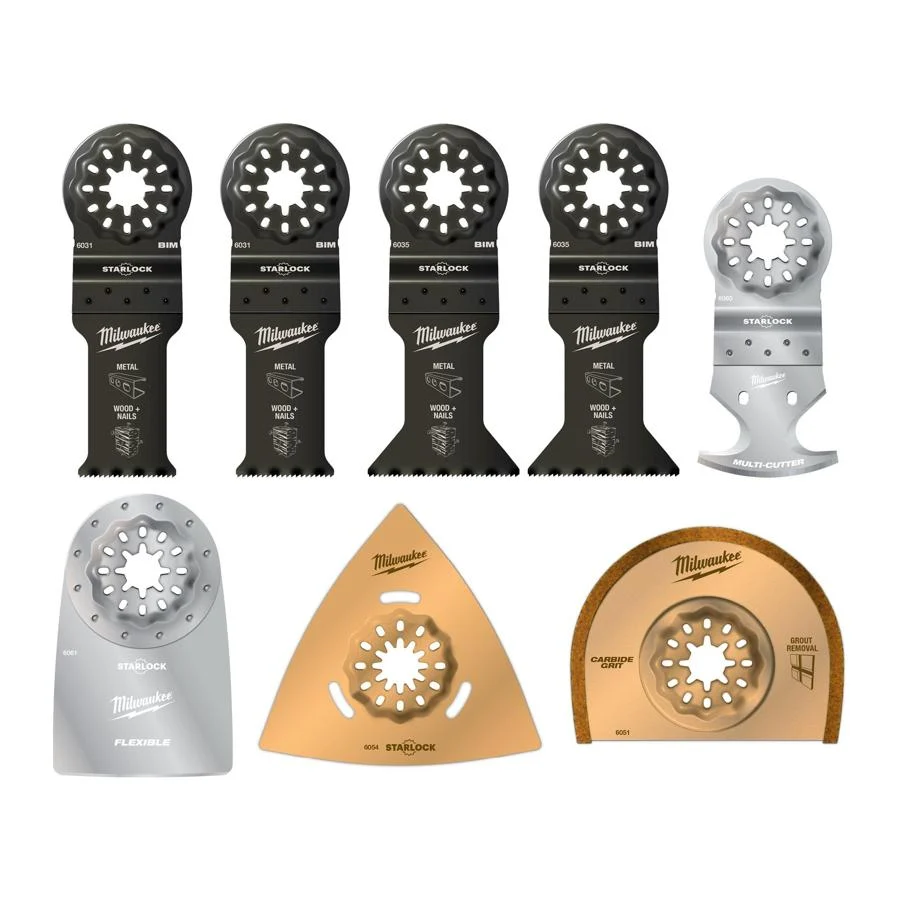
The Ultimate Guide to Milwaukee Multi Tool Blades
Introduction
Milwaukee multi tool blades are crucial components of any DIY enthusiast or professional tradesperson’s toolkit. These versatile accessories are designed to handle a wide range of cutting and slicing tasks, making them essential for various projects. Whether you’re working on woodworking, metalwork, or general home repairs, having the right Milwaukee blades can make all the difference in achieving precise and efficient results.
Part 1: Understanding Milwaukee Multi Tool Blades
The quality of Milwaukee blades is unmatched, thanks to the use of high-quality materials and advanced manufacturing processeses. The blades are constructed from premium steel and feature precision-ground teeth for clean and precise cuts. This level of quality ensures that the blades will last longer and perform better than cheaper, low-quality alternatives.
In addition to their durability, Milwaukee blades are also designed for user convenience and safety. Many of the blades feature color-coding and labeling to make it easy to identify the right blade for the job. They also often come with quick-change systems for fast and easy blade changes, reducing downtime and increasing productivity.
Level 1: Milwaukee multi tool blades are accessories designed to be compatible with Milwaukee multi tools, such as the M18 and M12 series. These blades come in various shapes, sizes, and materials to cater to different cutting needs. From wood and metal cutting to grout removal and scraping, there’s a Milwaukee multi tool blade for every application.
Level 2: The blades are typically made from high-quality materials such as high-speed steel, bi-metal, and carbide, ensuring durability and long-lasting performance. They feature different tooth patterns and edge designs to cater to specific cutting requirements, such as fine precision cutting, aggressive plunge cutting, and rapid material removal.
Part 2: Types of Milwaukee Multi Tool Blades
Milwaukee blades are an excellent choice for anyone in need of high-quality, versatile cutting tools. Whether you are a professional contractor, a hobbyist, or a homeowner tackling DIY projects, these blades will help you get the job done right the first time. With their exceptional performance, durability, and ease of use, Milwaukee blades are a valuable investment for any workshop or tool collection.
Level 1: Milwaukee multi tool blades come in different types to accommodate specific cutting tasks. For woodworking applications, there are precision woodcutting blades, fine-tooth blades for detailed work, and Japanese-tooth blades for fast and clean cuts.
Level 2: Metal cutting blades are designed to tackle materials like steel, aluminum, and copper, with bi-metal and carbide teeth for added durability and aggressive cutting power. Additionally, there are specialized blades for grout removal, scraping, and sanding, making Milwaukee multi tool blades highly versatile for various applications.
Part 3: Choosing the Right Milwaukee Multi Tool Blades
Level 1: When selecting Milwaukee multi tool blades, it’s essential to consider the material and thickness of the workpiece, as well as the type of cut required. For instance, fine-tooth blades are suitable for intricate cuts in hardwood, while coarse-tooth blades are better for rough cuts in softwood.
Level 2: Understanding the blade’s compatibility with your Milwaukee multi tool model is crucial as well. Some blades are specifically designed for certain models, ensuring a perfect fit and maximum performance. Additionally, considering the blade’s tooth pattern and material composition can help optimize cutting efficiency and longevity.
Part 4: Maintenance and Care for Milwaukee Multi Tool Blades
Level 1: Proper maintenance and care can significantly extend the lifespan of Milwaukee multi tool blades. After each use, it’s essential to clean the blades to remove any accumulated debris, preventing corrosion and dulling of the teeth. Using a wire brush or solvent can help remove stubborn residues.
Level 2: Regular sharpening of the blades is crucial to maintain cutting efficiency. There are various sharpening tools and techniques available, such as diamond files or sharpening stones, to restore the blade’s sharpness. Additionally, storing the blades in a dry and rust-free environment can prevent deterioration and ensure optimal performance.
Part 5: Tips for Effective Use of Milwaukee Multi Tool Blades
Level 1: To maximize the performance of Milwaukee multi tool blades, it’s essential to use the correct blade for the specific application. This includes choosing the right tooth pattern, material composition, and size to achieve the desired cutting results.
Level 2: Proper technique and safety measures are equally important when using Milwaukee multi tool blades. This includes using appropriate protective gear, maintaining a steady hand, and ensuring a secure workpiece for precise and safe cutting operations. Additionally, understanding the capabilities and limitations of the blades can help prevent damage and ensure longevity.
Part 6: Types of Milwaukee Multi-Tool Blades
Level 1:
Milwaukee blades come in a variety of types to accommodate different cutting needs.
Level 2:
- Wood cutting blades: These blades have coarse teeth and are designed to cut through wood and plastic materials with ease. They are ideal for making straight or curved cuts in wood.
- Metal cutting blades: These blades have finer teeth and are meant for cutting through metal, including copper, aluminum, and steel. They are perfect for cutting metal pipes, sheets, and nails.
Part 7: Blade Compatibility with Milwaukee Multi-Tool
Level 1:
It is important to ensure that the blades you are purchasing are compatible with your Milwaukee multi-tool.
Level 2:
- Milwaukee’s multi-tool blades are designed to be compatible with all Milwaukee oscillating multi-tools, ensuring a secure and efficient fit.
- It is also crucial to check the mounting system and size of the blades to make sure that they are compatible with your specific Milwaukee multi-tool model before making a purchase.
Part 8: Maintenance and Care of Milwaukee Blades
Level 1:
Proper maintenance can prolong the life of your Milwaukee blades and ensure optimal performance.
Level 2:
- After each use, it is important to clean the blades to remove any debris, dust, or residue. This can be done with a brush or compressed air to ensure the teeth remain sharp and efficient.
- Additionally, regularly inspecting the blades for signs of wear and tear, such as dulling or chipping, and replacing them when necessary can help maintain the quality and longevity of your Milwaukee blades.
Conclusion
Multi-tool blades are designed to provide maximum performance and durability for a variety of cutting tasks. Whether you need to cut wood, metal, plastic, or other materials, there is a Milwaukee multi-tool blade to suit your needs.
One of the key features of Milwaukee blades is their universal fit design. This means that they are compatible with most major brands of oscillating multi-tools, including Dewalt, Bosch, Makita, and more. This makes them a versatile and valuable addition to any contractor or DIY enthusiast’s toolbox.
Milwaukee offers a wide range of multi-tool blade styles and sizes to tackle different cutting applications. For example, they offer bi-metal blades for cutting through metal. Wood and metal blades for cutting through wood and metal, and carbide grit blades for aggressive cutting of abrasive materials like tile, grout, and cement board. They also offer specialty blades for tasks such as plunge cutting, flush cutting, and scraping.
Milwaukee multi tool blades are indispensable accessories for a wide range of cutting and slicing tasks. Offering versatility, durability, and precision. Understanding the different types, choosing the right blades, and maintaining them properly are essential for achieving optimal performance and longevity. By following best practices and techniques, these blades can significantly enhance the efficiency and quality of various projects. Making them an essential investment for any DIY enthusiast or professional tradesperson.

The Guide to Wire Stripper: Everything You Need to Know
Introduction
When using wire stripper, it’s important to take certain safety precautions to prevent accidents and injuries. Always wear safety goggles to protect your eyes from flying debris or sharp wire ends. Inspect the wire stripper for any damage or dull blades before use, and never use a damaged tool. When stripping wires, make sure to follow the manufacturer’s guidelines for the proper gauges and types of wires the tool can handle. Avoid using excessive force when stripping insulation, as this can damage the wire or the tool itself. Additionally, always cut the power source before working with live electrical wires, and use insulated tools to minimize the risk of electric shock.
Wire strippers are essential tools for anyone working with electrical wiring or cables. Whether you are a professional electrician or a DIY enthusiast, having the right wire stripper can make a world of difference in your work. In this comprehensive guide, we will explore everything you need to know about wire strippers, including their types, uses, and how to choose the best one for your needs.
Part 1: Understanding Wire Strippers
Level 1: What are Wire Strippers?
Wire strippers are hand-held tools used to remove the insulation from electrical wires to expose the metal conductor inside. This allows for proper connections to be made, whether it’s for splicing, attaching connectors, or terminating wires.
Level 2: Types of Wire Strippers
There are several types of wire strippers available, each designed for a specific purpose. Some common types include manual wire strippers, automatic wire strippers, and multipurpose wire strippers. Manual wire strippers require the user to manually adjust the blade to the desired wire size and then pull the wire through the tool to strip the insulation. Automatic wire strippers, on the other hand, feature a mechanism that automatically adjusts to the wire size and strips the insulation with a single squeeze of the handles. Multipurpose wire strippers are designed to strip insulation, cut wires, and crimp connectors, making them a versatile tool for various electrical tasks.
Part 2: Uses of Wire Strippers
Level 1: Electrical Work
One of the most common uses for wire strippers is in electrical work, such as installing light fixtures, outlets, and switches. Wire strippers are essential for preparing the wires to be connected and ensuring a secure and reliable electrical connection.
Level 2: DIY Projects
Wire strippers are also useful for DIY projects, such as building circuit boards, repairing appliances, or creating electronic devices. They allow for precise and clean wire stripping, which is crucial for the success of any project.
Part 3: How to Choose the Right Wire Stripper
Level 1: Consider the Wire Gauge
When choosing a wire stripper, it’s essential to consider the wire gauge or thickness you will be working with. Different wire strippers are designed for specific wire gauges, so selecting the right one will ensure efficient and accurate wire stripping.
Level 2: Ergonomics and Comfort
Since wire stripping can be a repetitive task, it’s important to consider the ergonomics and comfort of the wire stripper. Look for models with comfortable handles and easy-to-use mechanisms to reduce hand fatigue and improve overall efficiency.
Part 4: Tips for Using Wire Strippers
-
Use the appropriate wire strippers for the job. There are different types and sizes of wire strippers for different gauges of wire, so be sure to use the right one for the job.
- Carefully measure and mark the length of insulation to be removed before using the wire strippers. This will help ensure accuracy and prevent damage to the wire.
- Adjust the wire strippers to the proper gauge of wire by loosening the adjustment screw and sliding the cutting blades to the correct position.
- Hold the wire firmly in one hand while using the wire strippers with the other hand to avoid slipping and causing injury.
- Gently squeeze the handles of the wire strippers to cut through the insulation without damaging the wire underneath.
- After making the initial cut, carefully pull the insulation off the wire using the wire strippers, making sure not to pull too hard to avoid damaging the conductor.
- Check the stripped end of the wire for any nicks or damage to the conductor. If there are any, trim them with the wire strippers to ensure a clean, proper connection.
- Always wear safety goggles when using wire strippers to protect your eyes from any flying debris.
- Store wire strippers in a dry place to prevent rust and keep them sharp and in good working condition.
- Practice using wire strippers on scrap wire before attempting to strip wires in an actual project to ensure proper technique and avoid mistakes.
Part 5: Top Wire Stripper Brands and Models
Store wire strippers in a dry, clean environment to prevent rust and corrosion. Finally, periodically inspect the tool for any signs of wear or malfunction, and address any issues promptly to prevent further damage or safety hazards. With proper maintenance, wire strippers can provide years of reliable service for your electrical projects.
Level 1: Klein Tools
Klein Tools is a well-known brand in the electrical industry, offering a wide range of high-quality wire strippers for professionals and DIY enthusiasts. Their wire strippers are known for their durability, precision, and ergonomic design.
Level 2: IRWIN Tools
IRWIN Tools is another reputable brand that manufactures reliable and efficient wire strippers. Their products are designed to meet the needs of professionals and hobbyists alike, with a focus on performance and user comfort.

Part 5: Maintenance and Care of Wire Strippers
Proper maintenance of wire strippers is essential to ensure their longevity and effectiveness. After each use, clean the tool to remove any debris or residue that may have accumulated. Inspect the blades for any nicks or damage, and sharpen or replace them as needed. Lubricate any moving parts according to the manufacturer’s instructions to keep the tool operating smoothly.
-
Keep the cutting edges sharp and clean by regularly cleaning and inspecting the blades for any debris or build-up. This can be done with a soft cloth and a small amount of oil.
- Ensure that the wire stripper is kept dry and free from rust by storing it in a clean. Dry place when not in use.
- Use the wire stripper only for its intended purpose and do not use it on materials.
- Inspect the handles and grips for any signs of wear and tear, and replace them if necessary to maintain a secure and comfortable grip.
- Regularly check the adjustment screws and moving parts for any signs of looseness or damage. And tighten or replace them as needed to ensure smooth operation.
- Clean the wire stripper after each use, especially if it has been used on dirty or oily materials, to prevent build-up and damage to the cutting edges.
- If the wire stripper becomes damaged or dull, have it professionally sharpened or replaced to ensure safe and efficient operation.
- Always follow the manufacturer’s instructions and guidelines for proper maintenance and care of your specific wire stripper model.
Part 6: Safety Precautions When Using Wire Strippers
- Always wear safety glasses to protect your eyes from any flying debris while using wire strippers.
- Keep your fingers and hands away from the cutting edges of the wire strippers to avoid injury.
- Make sure to use the appropriate size and type of wire strippers for the specific job and wire gauge.
- Inspect the wire strippers for any damage or wear before using them to ensure they are in proper working condition.
- Use a stable and flat surface to work on while using wire strippers to prevent accidents or slips.
- Always cut away from your body and be mindful of the direction of the cutting action to avoid accidental cuts.
- Keep the wire strippers clean and free from dirt and debris to maintain their effectiveness and prevent accidents.
- Store wire strippers in a safe and secure location to prevent damage and keep them out of the reach of children.
- Do not use wire strippers near flammable materials or in wet conditions to avoid the risk of fire or electric shock.
- Read and follow the manufacturer’s instructions and guidelines for the specific type of wire strippers being used.
Conclusion
Wire strippers are indispensable tools for anyone working with electrical wiring or cables. By understanding the different types of wire strippers, their uses, and how to choose the right one, you can ensure efficient and precise wire stripping for all your projects. With the tips for using and maintaining wire strippers, as well as the top brands and models to consider, you can confidently select the best wire stripper for your needs and achieve professional results in all your electrical work.
Wire stripper is a type of hand tool used to remove the insulation from electrical wires. They have a pair of sharp blades that cut through the insulation without damaging the wire underneath. This allows the user to easily strip off the insulation and expose the bare wire for connection to electrical devices. Wire strippers come in various sizes and styles to accommodate different wire gauges and insulation types. They are commonly used by electricians, technicians, and DIY enthusiasts for electrical wiring and repair tasks.
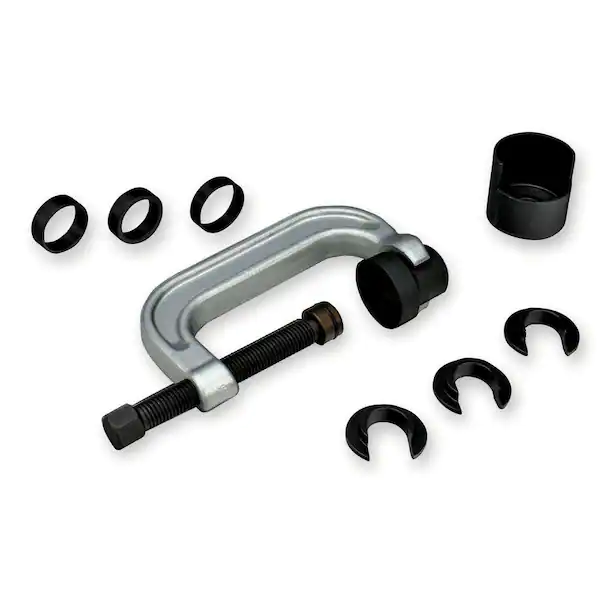
The Ultimate Guide to Bushing Removal Tools
Introduction
Bushing removal tools are essential for safely and efficiently removing bushings from various automotive and industrial components. These tools are specifically designed to prevent damage to the surrounding parts and to make the removal process as smooth as possible. Some common types of bushing removal tools include hydraulic press kits, bearing pullers, and slide hammer tools. Hydraulic press kits are ideal for large bushings that are pressed into place, while bearing pullers are perfect for removing smaller bushings. Slide hammer tools are versatile and can be used for a wide range of bushing sizes. Overall, bushing removal tools are essential for any mechanic or technician working on vehicles or machinery.
Bushing removal tools are essential for any DIY mechanic or professional technician working on suspension and steering components. These specialized tools make the removal of bushings from control arms, leaf springs, and other components much easier and more efficient. In this comprehensive guide, we will discuss the importance of bushing removal tools and provide an in-depth look at the different types available on the market.
Part 1: The Importance of Bushing Removal Tools
Hydraulic bushing removal tool use hydraulic pressure to exert force on the bushing, making removal much easier and more efficient. These tools are ideal for removing stubborn bushings, such as press-and-pull kits, use mechanical force to remove bushings from their housings. These tools are often more affordable and easier to use for smaller, less stubborn bushings.
Level 1: Why Bushing Removal Tools Are Necessary
Bushing removal tool is essential for safely and effectively removing worn-out or damaged bushings from various automotive components. Without the proper tools, removing bushings can be a time-consuming and frustrating process, often resulting in damage to the surrounding components.
Level 2: Benefits of Using Bushing Removal Tools
Using a bushing removal tool not only saves time and effort but also reduces the risk of damaging the surrounding components. These tools are designed to exert precise force on the bushing, making removal much easier and safer. Additionally, using a bushing removal tool ensures that the new bushing will be properly seated in its housing, leading to improved performance and longevity.
Part 2: Selecting the Right Bushing Removal Tool
Level 1: Consider the Type and Size of Bushing
Before selecting a bushing removal tool, it’s important to consider the type and size of the bushing you will be removing. Some tools certain types of bushings, so it’s important to choose the right tool for the job.
Level 2: Assessing the Workload
If you frequently work on suspension and steering components, investing in a high-quality hydraulic bushing removal tool may be a wise decision. However, if you only occasionally remove bushings, a manual tool may suffice.
Part 3: Using a Bushing Removal Tool
Level 1: Preparation
Before using a bushing removal tool, it’s important to ensure that the surrounding components are properly supported and that the area is clear of any obstructions. Additionally, lubricating the bushing and surrounding surfaces can make removal easier.
Level 2: Proper Technique
Using a bushing removal tool requires patience and precision. Applying steady force and making sure that the tool is properly aligned with the bushing are essential for successful removal. Additionally, taking the time to properly clean and inspect the surrounding components before installing the new bushing is crucial for optimal performance.
Part 4: Maintenance and Care of Bushing Removal Tools
Here are some general tips for the maintenance and care of bushing removal tools:
- Keep tools clean: After every use, make sure to clean the bushing removal tools thoroughly to remove any dirt, grease, or debris. Use a solvent or degreaser and a brush to clean the tools and wipe them dry with a clean cloth.
- Inspect regularly: Regularly check the condition of the bushing removal tools for any signs of wear, damage, or corrosion. This will help identify any issues early on and prevent further damage to the tools.
- Store properly: Store the bushing removal tools in a dry and clean place to protect them from moisture and corrosion. It’s also a good idea to keep the tools in a toolbox or case to prevent them.
- Lubricate moving parts: If the bushing removal tools have moving parts, such as handles or mechanisms, it’s important to lubricate them regularly to keep them functioning smoothly. Use a lightweight lubricant or oil to maintain the moving parts.
- Replace worn or damaged parts: It’s important to replace them as soon as possible. Using tools with worn or damaged parts can lead to safety hazards and ineffective performance.
- Follow manufacturer’s instructions: Always follow the manufacturer’s instructions for the care and maintenance of the specific bushing removal tools you are using. This will ensure that you are taking the proper steps to keep the tools in good condition.
- Use protective equipment: When using bushing removal tools, make sure to wear appropriate protective equipment, such as gloves and safety glasses, to prevent injuries and keep the tools clean.
By following these tips, you can help prolong the lifespan of your bushing removal tools and ensure they continue to perform effectively.
Part 5: Types of Bushing Removal Tools
- Bushing removal tool set: This set usually includes various sized bushing removal tools can fit different kinds of bushings. These can include press-in, screw-in, and other types of bushings.
- Slide hammer puller: This tool uses a slide hammer mechanism to forcefully pull out stubborn bushings from their housing, saving time and effort.
- Hydraulic press: A hydraulic press with specific adapters can push out bushings with significant force, especially for larger or more difficult to remove bushings.
- Bushing puller kit: A bushing puller kit typically includes a selection of interchangeable adapters and a slide hammer for removing a wide range of bushings.
- Bearing splitter set: While not specifically designed for bushings, a bearing splitter set can remove bushings by gripping the outside of the bushing and then using a hydraulic press or other force application tool to push it out.
- Universal bushing tool kit: This kit may include various tools such as pin punch sets, screw extractors, and other specialized tools for removing different kinds of bushings.
- Pneumatic bushing removal tool: A pneumatic tool that uses air pressure to forcefully remove bushings, particularly useful for quick and efficient bushing removal in an auto shop or similar setting.
These tools can be essential for mechanics, automotive professionals, and DIY enthusiasts to safely and effectively remove bushings from various applications such as suspension components, engines, and other mechanical systems.
Conclusion
After each use, it’s important to clean and lubricate the bushing removal tool to prevent rust and corrosion. This will ensure that the tool remains in optimal working condition for future use. Proper storage is essential for maintaining the longevity of your bushing removal tool. Keeping it in a cool, dry place and protecting it from moisture and excessive heat will prevent damage and ensure that it’s ready for use when needed.
Bushing removal tool is indispensable for anyone working on suspension and steering components. Whether you’re a professional mechanic or a DIY enthusiast, having the right tools for the job can make all the difference. By understanding the different types of bushing removal tool available, selecting the right tool for your needs, and using proper techniques, you can ensure that removal and replacement of bushings is a smooth and efficient process. Additionally, proper maintenance and care of your bushing removal tool will ensure that it remains in optimal working condition for years to come.
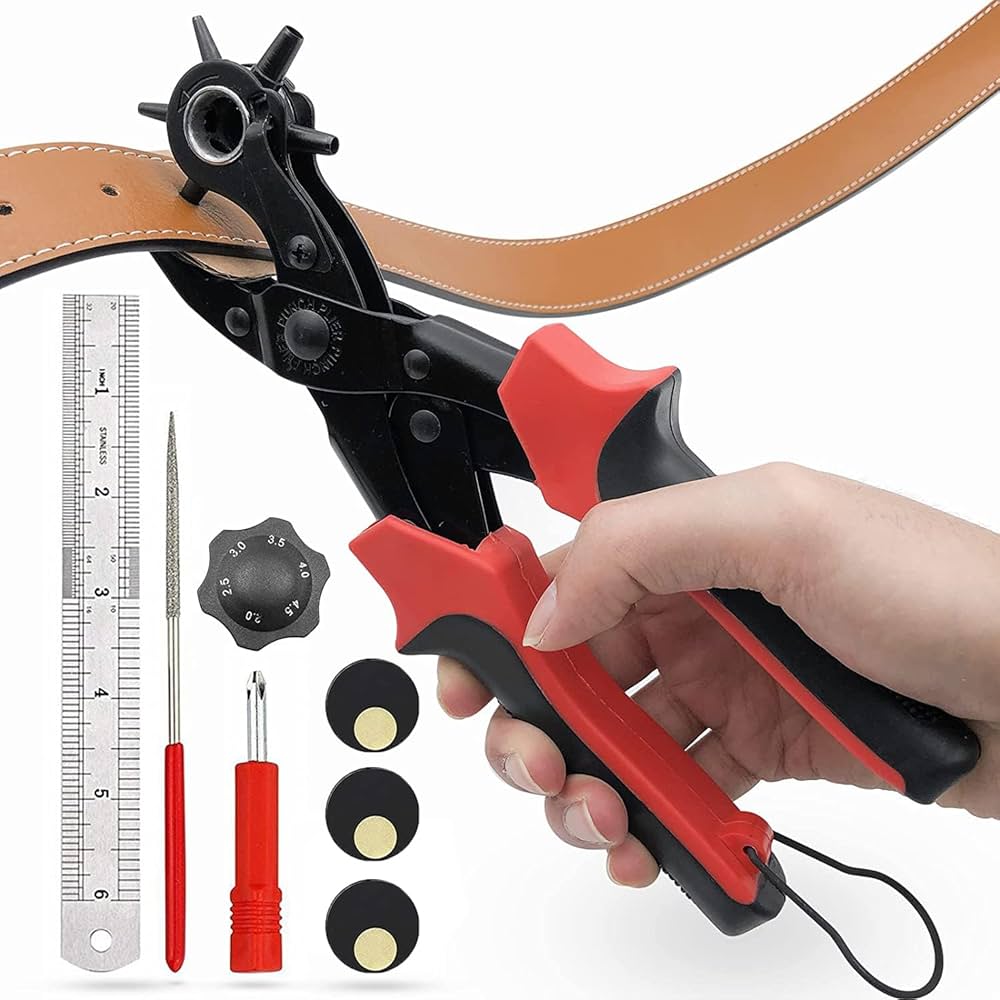
Mastering Leatherwork: The Guide to Leather Punch Tool
Introduction
Leather punch tools are vital instruments in the art of leatherworking, allowing craftsmen to create precise and uniform holes in leather for various applications such as stitching, riveting, and decorative detailing. These versatile tools come in a variety of designs and sizes, catering to different leather thicknesses and hole diameters. In this comprehensive guide, we will delve into the significance of leather punch tools, the different types and functionalities, the selection considerations, maintenance and care, creative applications, and tips for mastering the art of using these essential tools in leathercraft.
Part 1: Significance of Leather Punch Tools in Leathercraft
Level 1: Fundamental Tool in Leatherworking
Leather punch tools are fundamental for any leatherworker, playing a crucial role in the creation of clean and precise holes needed for stitching leather pieces together, adding embellishments, and fastening hardware.
Level 2: Versatile Applications
From creating holes for belts, straps, and watch bands to adding decorative accents and fastening hardware, leather punches are essential for a wide range of leathercraft projects, contributing to both functional and aesthetic aspects of the finished piece.
Part 2: Types and Functionalities of Leather Punch Tools
Level 1: Hole Punches
Hole punches are designed to create circular holes in leather, commonly used for hand-stitching, setting rivets, and adding hardware such as buckles and snaps, with various diameters and shapes available to suit different needs.
Level 2: Oblong and Slot Punches
Oblong and slot punch tools produce elongated holes in leather, ideal for specialized applications like creating slots for straps, lacing, and weaving, providing versatility in leathercraft projects that require non-circular perforations.
Part 3: Considerations When Selecting Leather Punch Tools
Level 1: Material and Quality
The material and quality of leather punch tools are vital considerations, with durable, high-quality steel punches offering longevity, precision, and the ability to maintain sharp cutting edges for clean hole production.
Level 2: Range of Hole Sizes
Choosing a set of leather punch tools with a wide range of hole sizes enables versatility in leathercraft projects, accommodating varying stitch and hardware sizes without the need for multiple tools, offering convenience and efficiency.
Part 4: Maintenance and Care of Leather Punch Tools
Level 1: Cleaning and Lubrication
Regular cleaning and lubrication of leather punch tools help prevent corrosion, maintain sharpness, and ensure smooth and effortless cutting, prolonging the lifespan and performance of the tools.
Level 2: Storage and Protection
Proper storage and protection of leather punch tools, such as storing in a dry environment and using protective caps, prevent damage and maintain the integrity of cutting edges, preserving the tools for long-term use.
Part 5: Creative Applications of Leather Punch Tools
Level 1: Decorative Perforations
Leather punch tools are utilized for creating decorative perforations, from intricate patterns and designs to decorative borders and edges, adding uniqueness and personalization to leather projects.
Level 2: Complementary Tool in Leatherworking
In addition to hole creation, leather punch tools complement other leathercraft tools and techniques, such as stitching, dyeing, and tooling, contributing to the overall quality and aesthetics of the finished leather goods.
Part 6: Tips for Mastering Leather Punch Tools in Leathercraft
Level 1: Precision and Technique
Practicing precision and technique in using leather punch tools is essential, ensuring consistent hole placement and depth, resulting in professional and polished leatherwork.
Level 2: Test and Familiarize
Before using leather punch tools on a final piece, it’s advisable to test and familiarize oneself with the tools on scrap leather, practicing hole placement and technique to achieve desired results without damaging the final project.
Part 7: Advanced Techniques and Specialized Punches
Level 1: Stitching Chisels
Stitching chisels are a specialized type of leather punch used for creating multiple holes simultaneously, aligning with the stitching line for uniform and professional-looking hand-stitched seams, adding efficiency and precision to leathercraft projects.
Level 2: Rotary Punches
Rotary punches offer a continuous punching motion, allowing for quick and efficient hole creation, ideal for large-scale projects or repetitive tasks, delivering consistent results while minimizing hand fatigue.
Part 8: Ergonomic Features and Comfort
Level 1: Handle Design
Ergonomic handle design in leather punch tools provides comfort and reduces hand strain during use, with features such as cushioning, non-slip grip, and a comfortable grip size contributing to prolonged usage without discomfort.
Level 2: Adjustability and Customization
Some leather punch tools offer adjustability, allowing users to customize the hole size and spacing, providing flexibility in accommodating different project requirements and personal preferences for hole placement.
Part 9: Special Considerations for Different Leather Types
Level 1: Thickness and Density
Thicker and denser leather types, such as full-grain or vegetable-tanned leather, may require heavier-duty and sharper-edged punch tools to achieve clean and precise hole cutting without causing damage to the material.
Level 2: Soft and Supple Leather
Soft and supple leather varieties, like lambskin or glove leather, necessitate finer, more delicate punches to avoid tearing or distorting the material, requiring precision and light pressure to create neat, well-defined holes.
By considering advanced techniques, specialized punches, ergonomic features, and special considerations for different leather types, leatherworkers can expand their knowledge and expertise in utilizing leather punch tools, enhancing their capabilities in producing high-quality and professional leather goods. These factors contribute to a comprehensive understanding of the art and craft of leatherworking, empowering artisans to elevate their skills and create exceptional leather products with precision and artistry.
Part 10: Collaborative Applications with Other Leatherworking Tools
Level 1: Hand in Hand with Stitching Tools
Leather punch tools work in conjunction with stitching tools such as awls and needles, ensuring precise hole placement and size alignment for seamless and secure hand-stitched joins, contributing to overall structural integrity in leather items.
Level 2: Partnering with Riveting and Hardware Tools
When used alongside riveting and hardware tools, leather punch tools create consistent and compatible holes for setting rivets, snaps, and other hardware, ensuring secure and durable fastenings in leather projects, reinforcing functionality and longevity.
Part 11: Continuous Improvement and Skill Enhancement
Level 1: Skill Development and Practice
Continual practice and refinement of leather punch tool techniques contribute to skill development and proficiency, allowing craftsmen to produce cleaner, more accurate holes and expanded creativity in leather design and construction.
Level 2: Exploration and Experimentation
Encouraging exploration and experimentation with various leather punch tools and techniques fosters innovation and the discovery of novel applications, leading to enhanced craftsmanship and the development of unique and distinctive leather pieces.
Leather punch tool serves as indispensable assets for leather crafters, offering precision, versatility, and creative potential in leatherworking. Through advanced techniques, ergonomic features, considerations for different leather types, collaborative applications with other leatherworking tools, and a commitment to continuous improvement, artisans can harness the full potential of leather punch tools, furthering their expertise and artistry in crafting exceptional and enduring leather products. These tools not only facilitate technical refinement but also inspire the expression of individual creativity, adding depth and distinction to the timeless tradition of leatherworking.
Conclusion
Leather punch tool is indispensable for leatherworkers, serving as essential instruments for creating precise and uniform holes in leather for both functional and decorative purposes. By understanding the significance, types, considerations in selection, maintenance, creative applications, and mastering tips of leather punch tools, craftspeople can elevate the quality and artistry of their leatherwork, ensuring precise and professional results in their leathercraft projects. With this comprehensive guide, enthusiasts and professionals alike can further appreciate the versatility and importance of leather punch tools in the timeless art of leatherworking. These tools not only facilitate technical refinement but inspire individual creativity, elevating the timeless tradition of leatherworking into an art form.
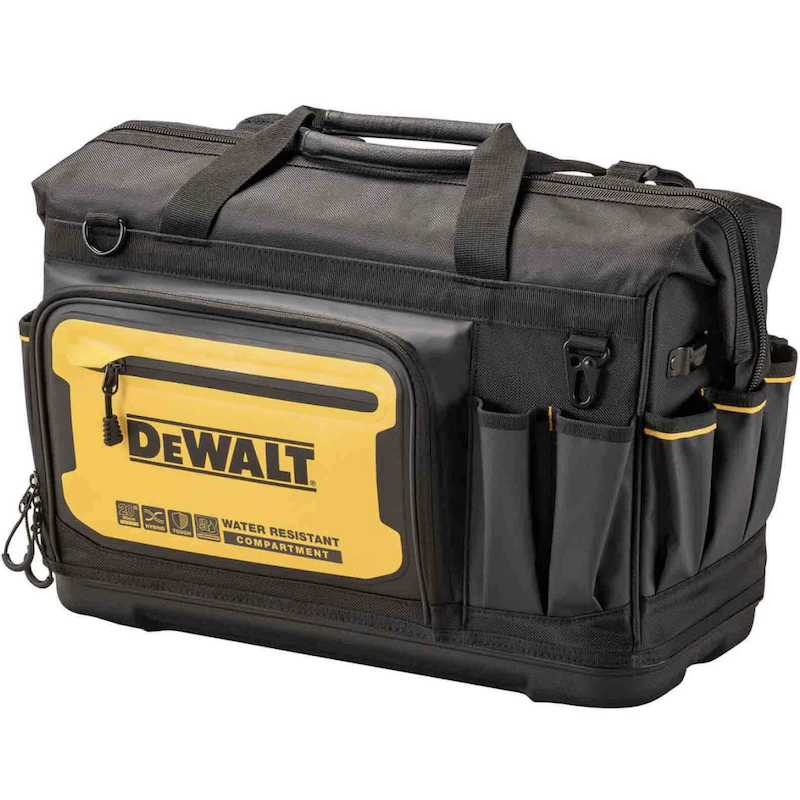
The Ultimate Guide to Choosing the Best Tool Bag for Your Needs
Introduction
A reliable and well-organized tool bag is an essential companion for anyone working in construction, carpentry, plumbing, or any other trade that requires the use of tools. However, with a wide array of options available, selecting the best tool bag for your specific needs can be a daunting task. In this comprehensive guide, we will explore the factors to consider when choosing a tool bag, the different types and designs available, the organizational features, the durability and material considerations, and the additional functionalities that can enhance the utility of a tool bag.
Part 1: Factors to Consider When Choosing a Tool Bag
Level 1: Purpose and Usage
Understanding the specific purpose and usage of the tool bag is crucial. Whether for heavy-duty construction work, daily maintenance tasks, or occasional DIY projects, the intended usage will determine the size, capacity, and overall sturdiness required.
Level 2: Portability and Accessibility
Consider the need for portability and ease of access to the tools. A tool bag should facilitate convenient transportation while providing quick and easy access to the tools and equipment without the hassle of rummaging through a cluttered bag.
Part 2: Types and Designs of Tool Bags
Level 1: Open Tote Bags
Open tote bags provide easy accessibility and visibility to tools, allowing for quick identification and retrieval. These are suitable for larger tools and items without the need for intricate organization.
Level 2: Backpack Tool Bags
Backpack tool bags offer hands-free carrying and even weight distribution. They are ideal for professionals who need to transport a variety of tools and equipment over longer distances or uneven terrain.
Part 3: Organizational Features of Tool Bags
Level 1: Pockets and Compartments
Numerous pockets and compartments are essential for keeping tools organized and readily accessible. Different-sized pockets and dividers allow for sorting and storing a variety of tools, accessories, and hardware.
Level 2: Top-Opening vs. Wide-Mouth Design
Consider whether a top-opening or wide-mouth design would better suit your organizational preferences. Top-opening bags have better organization capabilities, while wide-mouth designs provide easier access and visibility to larger tools and items.
Part 4: Durability and Material Considerations
Level 1: Construction and Durability
Look for a tool bag constructed from durable materials with reinforced stitching and strong zippers. A rugged construction ensures the bag can withstand the rigors of a demanding work environment.
Level 2: Water-Resistant and Abrasion-Resistant Materials
Water-resistant and abrasion-resistant materials provide protection for tools against the elements and reduce wear and tear, ensuring longevity and protecting the bag’s contents in various working conditions.
Part 5: Additional Functionalities in Tool Bags
Level 1: Integrated LED Lights
Some tool bags feature integrated LED lights, which can be incredibly useful when working in low-light conditions or dimly lit spaces, offering better visibility when searching for tools.
Level 2: USB Charging Ports
Modern tool bags may come with built-in USB charging ports, allowing users to recharge their electronic devices on the go, providing a convenient and practical feature for professionals who rely on electronic tools and devices.
Part 6: Ergonomics and Comfort Features
Level 1: Padded Shoulder Straps and Handles
Ergonomic design elements, such as padded shoulder straps and handles, help distribute the weight of the tool bag evenly, reducing strain and discomfort when carrying heavy loads over long distances or periods, promoting better posture and minimizing the risk of fatigue and injury.
Level 2: Adjustable Straps and Back Support
Tool bags with adjustable straps and back support offer customization for individual comfort and body types, creating a more ergonomic carrying experience and minimizing the physical strain associated with transporting tools and equipment.
Part 7: Security and Theft Prevention
Level 1: Locking Mechanisms
For professionals who manage high-value tools and equipment, tool bags with locking mechanisms provide added security, preventing unauthorized access and deterring theft, providing peace of mind when the bag is left unattended on a job site or in public spaces.
Level 2: RFID-Blocking Technology
Some advanced tool bags feature RFID-blocking technology, safeguarding valuable tools from electronic theft and unauthorized scanning, ensuring the security of electronic devices and preventing data theft, particularly for professionals using sensitive electronic tools.
Part 8: Warranty, Customer Support, and User Reviews
Level 1: Quality Assurance
Consider the manufacturer’s warranty and customer support offerings, as well as the overall reputation and reliability of the brand. A solid warranty and responsive customer support reflect the manufacturer’s commitment to quality and customer satisfaction.
Level 2: User Reviews and Recommendations
Before making a final decision, research user reviews and seek recommendations from colleagues and industry professionals. Insights from real users can provide valuable perspectives on the durability, organizational features, comfort, and overall performance of various tool bags, aiding in informed decision-making.
Part 9: Budget Considerations and Value for Money
Level 1: Cost versus Quality
When evaluating tool bags, it’s important to balance cost with the quality and features offered. While a more budget-friendly option may be appealing, it’s essential to ensure that the chosen tool bag provides the necessary durability, functionality, and organizational capabilities for the intended use.
Level 2: Long-Term Investment
Viewing a tool bag as a long-term investment rather than a short-term purchase can justify spending a bit more on a higher-quality, durable bag. A well-constructed tool bag with advanced features and a longer lifespan can provide superior value for money over time, reducing the need for frequent replacements or repairs.
Part 10: Personalization and Customization Options
Level 1: Custom Branding and Embroidery
For professionals or businesses, the ability to personalize tool bags with custom branding, embroidery, or logos can enhance brand visibility, professionalism, and a sense of team identity, while also deterring theft and ensuring easy identification of company-owned equipment.
Level 2: Modular and Interchangeable Components
Tool bags with modular and interchangeable components offer customization and flexibility, allowing users to adapt the bag to their specific needs by adding or removing compartments, pouches, or tool holders, providing a tailored solution for individual work requirements.
Part 11: Specialized Tool Bags for Unique Requirements
Level 1: Electrician Tool Bags
Electrician tool bags are designed with specialized features such as insulated pockets, cable and wire management systems, and protective compartments for electrical tools, catering specifically to the needs and safety requirements of electricians.
Level 2: Maintenance and HVAC Tool Bags
Tool bags designed for maintenance and HVAC (heating, ventilation, and air conditioning) professionals offer compartments and pockets tailored for specialized tools, diagnostic equipment, and maintenance supplies, increasing efficiency and organization in these industries.
Part 12: Eco-Friendly and Sustainable Options
Level 1: Recycled and Sustainable Materials
For environmentally conscious professionals, tool bags made from recycled and sustainable materials provide a greener alternative. Reducing the environmental impact of production and promoting sustainability in the tool bag industry.
Level 2: Environmental Certifications
Some tool bag manufacturers prioritize environmental stewardship by obtaining certifications and adhering to eco-friendly manufacturing processes. Ensuring that their products align with recognized environmental standards and regulations.
Selecting the best tool bag involves a comprehensive assessment of various criteria such as purpose, type, organizational features, durability, additional functionalities, ergonomics, security, budget, personalization options, specialized needs, and sustainability. Carefully evaluating these factors, individuals and professionals can make informed decisions. Ensuring that the chosen tool bag meets their unique requirements and provides optimum functionality, comfort, durability, and security.
Conclusion
A well-chosen tool bag is an indispensable asset to any tradesperson or DIY enthusiast, enabling efficient organization, transportation, and access to essential tools. By considering the purpose, type, organizational features, durability, and additional functionalities when selecting a tool bag, individuals can ensure they have the ideal solution to suit their specific needs. The best tool bag will enhance productivity, convenience, and overall satisfaction in tool management and on-site work.
By incorporating these crucial factors into the decision-making process, individuals can select a tool bag. It not only meets their immediate needs but also provides long-term value, durability, convenience, and ergonomic comfort, ensuring an optimal tool-carrying experience in any professional or DIY setting.
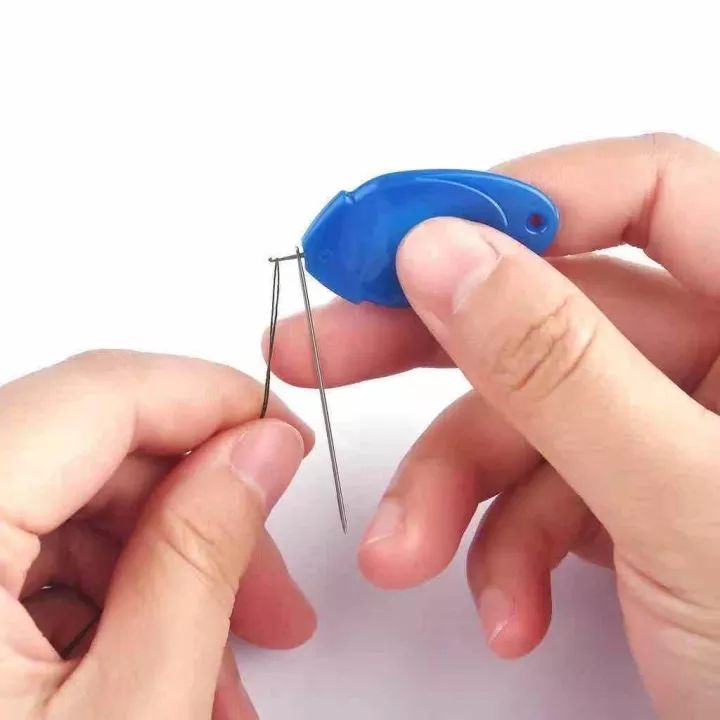
The Guide to Needle Threader Tool: Making Sewing Easier
Introduction
Sewing has been a beloved craft for centuries, allowing people to create beautiful garments and crafts. However, threading a needle can be a frustrating and time-consuming task, especially for those with poor eyesight or shaky hands. That’s where needle threaders come in. These handy tools make threading a needle a breeze and are a must-have for any sewing enthusiast. In this comprehensive guide, we will explore everything you need to know about needle threader tool, from their different types and uses to tips for using them effectively.
Part 1: Types of Needle Threaders
Level 1: Manual and Automatic Needle Threaders
Needle threader tool comes in two main types: manual and automatic. Manual needle threaders are simple tools with a thin wire or loop that helps guide the thread through the eye of the needle. Automatic needle threaders, on the other hand, are mechanical devices that use a built-in spring mechanism to push the thread through the needle’s eye with a simple press of a button.
Level 2: Pros and Cons of Each Type
Both manual and automatic needle threader tools have their pros and cons. Manual threaders are simple, affordable, and portable, making them ideal for travel or small sewing projects. Automatic threaders, on the other hand, are quicker and easier to use, especially for those with dexterity or vision issues. However, they can be bulkier and more expensive than manual threaders.
Part 2: Uses of Needle Threaders
Level 1: Sewing and Embroidery
Needle threaders are essential tools for sewing and embroidery. Whether you are working on a delicate hand-sewn project or a detailed embroidery design, a needle threader tool can save you time and frustration by quickly and effortlessly threading your needle.
Level 2: Quilting and Mending
Quilting and mending are two other popular sewing activities that can benefit from the use of a needle threader tool. Quilting often involves working with multiple layers of fabric and thick thread, making it difficult to thread a needle manually. A needle threader can make this process much more manageable. Likewise, when mending clothing or other items, a needle threader can help you quickly mend seams and tears without struggling to thread a needle.
Part 3: Tips for Using Needle Threaders Effectively
Level 1: Preparation and Technique
Before using a needle threader, it’s essential to prepare your needle and thread. Cut the end of your thread at a sharp angle to make it easier to thread through the needle. Additionally, hold the needle and threader steady while guiding the wire or loop through the needle’s eye to ensure a smooth and successful threading.
Level 2: Choosing the Right Threader for Your Needs
Not all needle threaders are created equal, and choosing the right one for your needs can make a big difference in your sewing experience. Consider factors such as the size of the needles you typically use, the type of thread you work with, and any dexterity or vision issues you may have when selecting a needle threader.
Part 4: Maintaining and Caring for Needle Threaders
Level 1: Cleaning and Storage
Like any tool, needle threaders require proper maintenance to ensure they work effectively. After each use, remove any excess thread or lint from the wire or loop of your threader. Additionally, store your threader in a clean, dry place to prevent rust or damage.
Level 2: Replacement and Upkeep
Over time, needle threaders may wear out or become bent, making them less effective. If you notice your threader is not working as well as it used to, it may be time to replace it. Regularly inspect your threader for any signs of damage and make replacements as necessary to ensure smooth and efficient sewing.
Part 5: The Evolution of Needle Threaders
Level 1: Historical Significance
Needle threaders have a long history, with early versions dating back to the 18th century. These early threaders were often made of metal and had intricate designs, reflecting the craftsmanship of the time. As technology advanced, needle threaders became more affordable and accessible, allowing more people to enjoy the benefits of these helpful tools.
Level 2: Modern Innovations
Today, needle threaders come in a variety of designs and materials, catering to a wide range of sewing needs. From ergonomic handles to built-in LED lights for better visibility, modern needle threaders continue to evolve to make sewing easier for all enthusiasts. As the demand for sewing and crafting grows, we can expect to see even more innovative needle threader designs in the future.
Part 6: Needle Threaders for Different Needle Types
Level 1: Specialty Needle Threaders
In addition to standard sewing needles, there are also specialty needles used for specific purposes, such as beading, quilting, or upholstery. As a result, there are needle threaders specifically designed to accommodate these unique needle types. These specialty threaders have smaller or larger wire or loop sizes to fit the varying eye shapes and sizes of specialty needles, making them an essential tool for those who work with non-standard needles.
Level 2: Benefits of Using Specialty Threaders
Using a specialty needle threader ensures that you can efficiently thread any type of needle, regardless of its size or shape. This versatility is essential for sewers and crafters who work with a variety of needle types, as it saves time and reduces frustration when switching between different needles for different projects.
Part 7: Needle Threaders for Individuals with Special Needs
Level 1: Accessibility and Inclusivity
For individuals with visual impairments, arthritis, or other dexterity issues, threading a needle can be an extremely challenging task. Needle threaders have become indispensable tools for those with special needs, providing accessibility and inclusivity within the sewing and crafting community.
Level 2: Features for Special Needs
Many needle threaders are designed with features that cater to individuals with special needs. For example, some threaders have larger handles for easy gripping, while others have built-in magnifiers or LED lights to aid those with vision impairments. These thoughtful design elements make sewing accessible to a wider range of individuals. Allowing everyone to enjoy the therapeutic and creative benefits of sewing.
Part 8: DIY Needle Threaders and Creative Alternatives
Level 1: Homemade Needle Threaders
For those who enjoy a bit of DIY, it’s possible to create homemade needle threaders using basic materials found around the house. Small pieces of wire, dental floss threaders, or even fishing line can be fashioned into makeshift needle threaders. Providing a budget-friendly and creative alternative to store-bought options.
Level 2: Eco-Friendly Alternatives
In an effort to reduce waste and promote sustainability, some sewers and crafters have turned to eco-friendly alternatives to traditional needle threaders. For example, using biodegradable materials or repurposing everyday items like paper clips or bobby pins as makeshift threaders can help minimize the environmental impact of sewing tools while showcasing resourcefulness and creativity.
Conclusion
Needle threader tool is a simple yet invaluable tool for anyone who enjoys sewing, crafting, or mending. Whether you opt for a manual or automatic threader, knowing how to effectively use and care for your tool can greatly enhance your sewing experience. Understanding the different types of needle threaders, their uses, and maintenance tips. You can make the most of this handy tool and spend less time struggling with threading needles, and more time enjoying your sewing projects.
Ultimately, needle threaders have revolutionized the sewing experience for individuals of all skill levels and abilities. Whether using a standard, specialty, or DIY threader, the convenience and efficiency they offer make them an indispensable tool in any sewing kit. Embracing innovation and creativity, needle threaders continue to play a vital role in advancing the art of sewing.
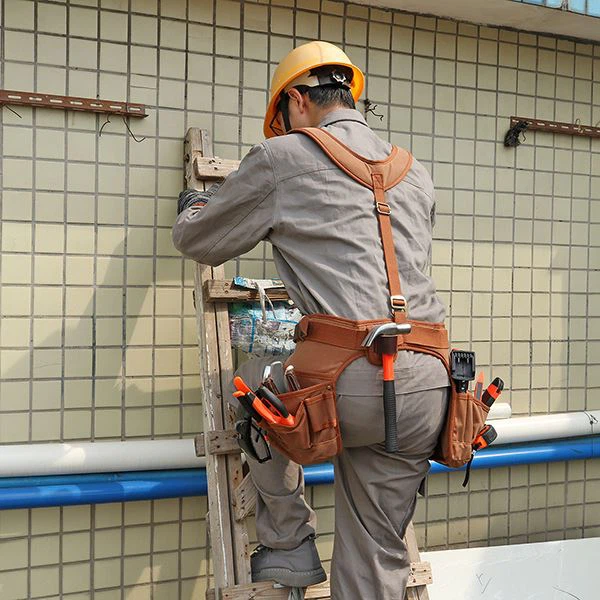
Carpenter Tool Belt: Efficiency and Organization on the Go
Introduction
A carpenter tool belt serves as an indispensable accessory, providing convenience and efficiency for professionals and DIY enthusiasts alike. These versatile belts are designed to keep essential tools and supplies within reach, enhancing productivity and streamlining tasks. In this definitive guide, we will explore the features, benefits, and selection considerations for carpenter tool belts, shedding light on the paramount role they play in the construction and woodworking realms.
Part 1: Understanding the Importance of a Carpenter Tool Belt
A carpenter tool belt serves as a vital component of a professional’s toolkit, providing a platform for easy access to essential tools and supplies during a multitude of tasks.
Level 1: The tool belt promotes efficiency by eliminating the need for constant trips back and forth to a toolbox, allowing workers to keep their tools within arm’s reach at all times.
Level 2: By offering a hands-free solution for tool organization, the belt enables carpenters to focus on the task at hand, reducing unnecessary downtime and enhancing the overall workflow efficiency.
Part 2: Key Features and Components of Carpenter Tool Belts
Carpenter tool belts are designed with various features and components to accommodate different tool requirements and working preferences.
Level 1: Common components of tool belts include pouches, holders, loops, and pockets, offering designated spaces for hammers, screwdrivers, pliers, measuring tapes, and other frequently used tools.
Level 2: Some tool belts are equipped with built-in hammer holders, tape measure clips, drill bit holders, and utility knife pockets, providing additional organization and accessibility for specific tools commonly used by carpenters.
Part 3: Material and Durability Considerations
The durability and longevity of a tool belt largely depend on the quality of materials used in its construction, making material selection of utmost importance.
Level 1: Tool belts are often made from leather, nylon, or polyester, each offering its unique advantages in terms of strength, longevity, and resistance to wear and tear.
Level 2: Premium leather tool belts are sturdy and durable, with the ability to withstand heavy use, while nylon and polyester belts are lightweight and moisture-resistant, making them suitable for various job site conditions.
Part 4: Comfort and Fit for All-Day Wear
An essential aspect of a carpenter tool belt relates to its wearability and comfort, especially for tradespeople who spend extended hours on the job.
Level 1: Modern tool belt designs feature padded waistbands and adjustable straps to offer a comfortable fit for a wide range of body types, reducing fatigue and promoting prolonged wearability.
Level 2: Ergonomic features such as padded suspenders and breathable materials contribute to minimized strain on the body, making the tool belt an indispensable and ergonomic accessory for carpenters working on long shifts.
Part 5: Customization and Modular Tool Belt Systems
Modular tool belt systems offer carpenters the flexibility to customize their tool-carrying solutions, catering to individual tool preferences, job requirements, and personal comfort.
Level 1: Modular tool belts allow for the addition, removal, and reconfiguration of pouches, holders, and accessories, enabling users to adapt the belt to a specific task or working environment.
Level 2: The modularity of these systems facilitates the organization of tools based on workflow requirements, resulting in personalized solutions for different trades and job site demands, ensuring optimum efficiency and organization.
Part 6: Selecting the Right Carpenter Tool Belt for the Job
Factors such as trade specialization, task requirements, and personal preferences play a critical role in determining the most suitable tool belt for a carpenter.
Level 1: Considerations such as tool capacity, weight distribution, and organization convenience shape the selection process, ensuring that the chosen belt meets the specific needs of the user.
Level 2: It is crucial to research and compare various tool belt models, considering aspects such as pocket and pouch layouts, material durability, comfort features, and adjustability, to make an informed decision that aligns with the user’s unique job demands and working environment.
Part 7: Maintenance and Care for Carpenter Tool Belts
Proper maintenance and care are vital for ensuring the longevity and functionality of a carpenter tool belt, safeguarding its performance and durability in demanding work environments.
Level 1: Regular cleaning and maintenance, including the removal of debris and dirt, as well as the occasional conditioning of leather belts, help preserve the integrity of the materials and components, extending the lifespan of the tool belt.
Level 2: Additionally, inspecting the belt for wear, checking stitching and seams, and repairing or replacing worn-out components as needed can prevent premature degradation and maintain the belt’s structural integrity, supporting its long-term usability on the job site.
Part 8: Specialized Tool Belts for Unique Carpentry Needs
Specialized tool belt designs cater to unique carpentry tasks and trade requirements, offering tailored tool organization solutions for specialized applications and working environments.
Level 1: Task-specific tool belts are available for various trade disciplines, such as framing, finish carpentry, electrical work, and woodworking, providing optimized tool layouts and features tailored to the demands of each trade.
Level 2: These specialized tool belts may include features like tool-specific pockets, magnetic components, and reinforced holders, providing the necessary organization and accessibility required for the tools and supplies essential to each specific trade.
Part 9: The Evolution and Future of Tool Belt Design
As technology and user needs evolve, tool belt designs continue to advance, incorporating innovative materials, ergonomic features, and technology-driven enhancements to meet the evolving demands of modern trade professionals.
Level 1: Advancements in material science and fabrication techniques contribute to the development of lighter, more durable, and weather-resistant tool belt materials, enhancing performance and user comfort on the job site.
Level 2: The integration of technology-driven features, such as RFID tracking, modular tool holders, and personal safety devices, represents a potential direction for future tool belt designs, aiming to improve tool management, task efficiency, and worker safety in dynamic job site environments.
Part 10: Evaluating User Feedback and Reviews
User feedback and reviews offer valuable insights into the practicality, durability, and performance of different tool belt models, providing firsthand accounts of their suitability for various tasks and job site conditions.
Level 1: Prioritizing user feedback enables carpenters to gain an understanding of real-world experiences and potential considerations in selecting a tool belt that aligns with their specific needs and expectations.
Level 2: By weighing user testimonials and recommendations, individuals can make informed decisions that address their unique workflow requirements, helping ensure the chosen tool belt meets their expectations for functionality, comfort, and durability.
Conclusion
A carpenter tool belt serves as an essential accessory, offering convenience, efficiency, and organization for professionals and enthusiasts in the construction and woodworking industries. By understanding the key features, material considerations, wearability, customization options, and trade-specific requirements, individuals can select a tool belt that aligns with their unique needs, promoting enhanced work efficiency, comfort, and task performance in their daily operations. As an indispensable and practical tool-carrying solution, the carpenter tool belt continues to play a pivotal role in empowering tradespeople with the organizational advantage and accessibility needed for optimal task execution.
In conclusion, carpenter tool belts offer a critical platform for organization, efficiency, and convenience in the construction and woodworking trades. By considering key factors such as material durability, wearability, customization options, trade-specific requirements, maintenance needs, and specialized tool belt designs, carpenters can make informed decisions and select a tool belt that aligns with their unique needs, promoting enhanced work efficiency, comfort, and task performance. As an indispensable and practical tool-carrying solution, the carpenter tool belt continues to play a pivotal role in empowering tradespeople with the organizational advantage, accessibility, and task-specific functionality needed for optimal task execution.


